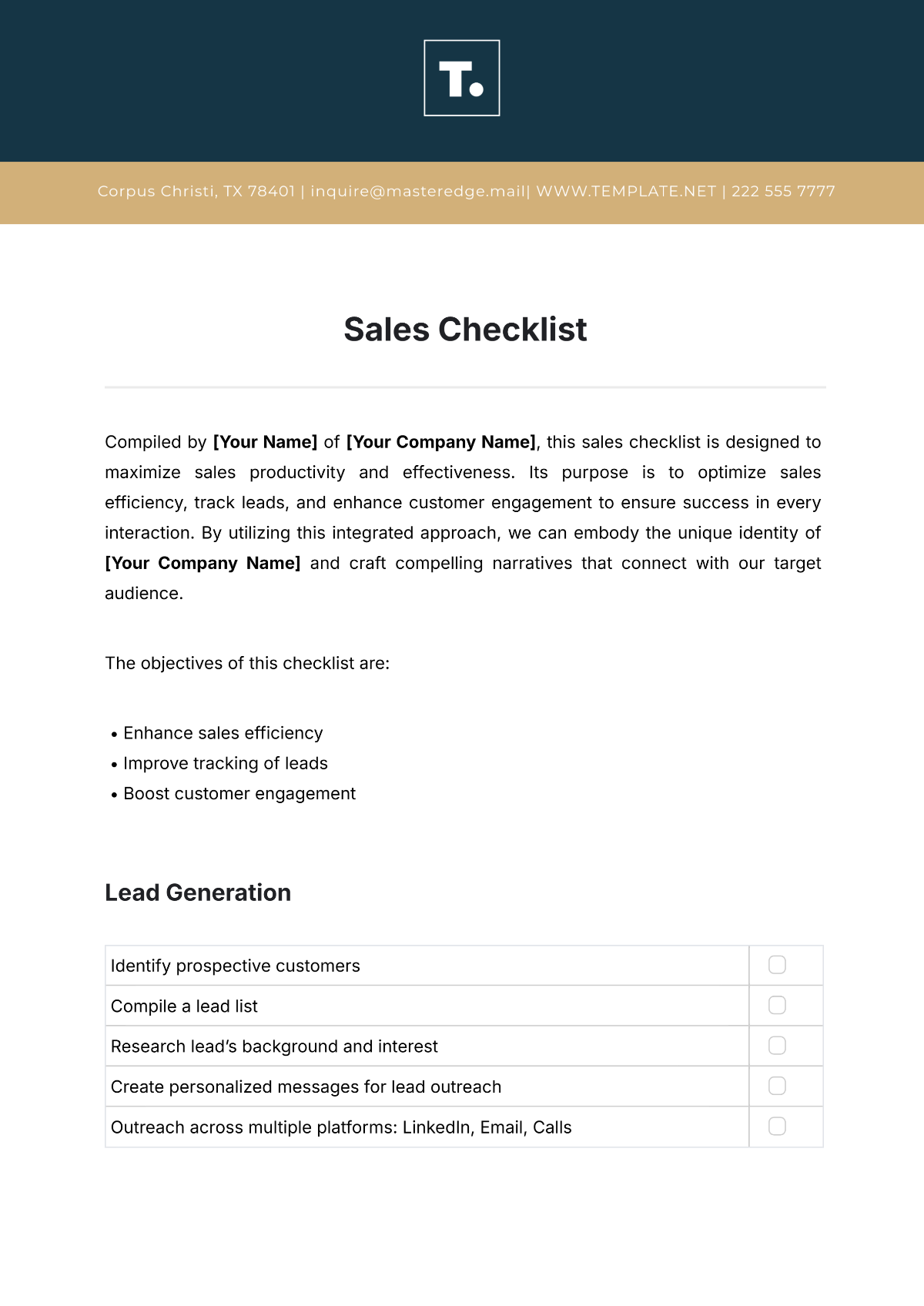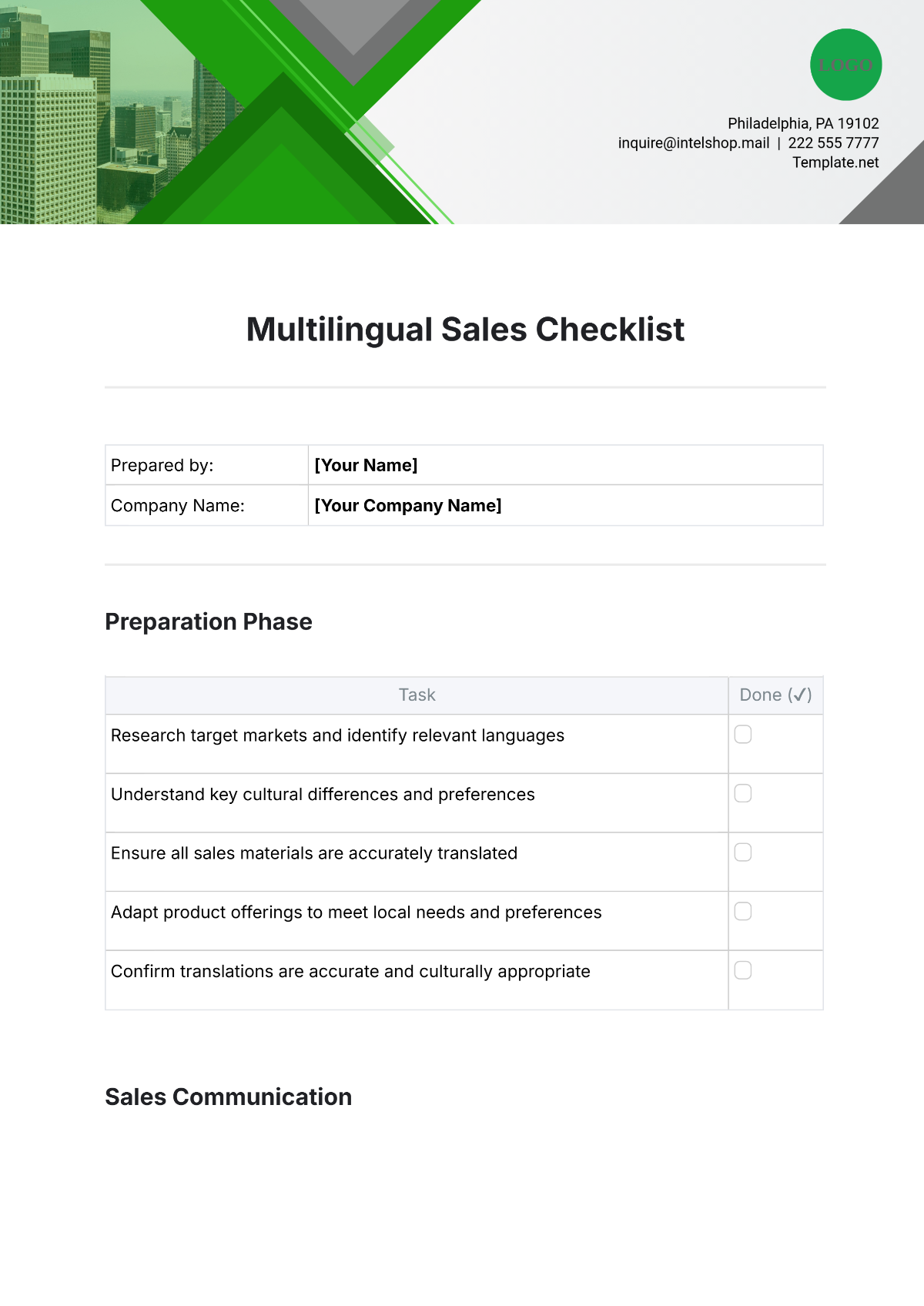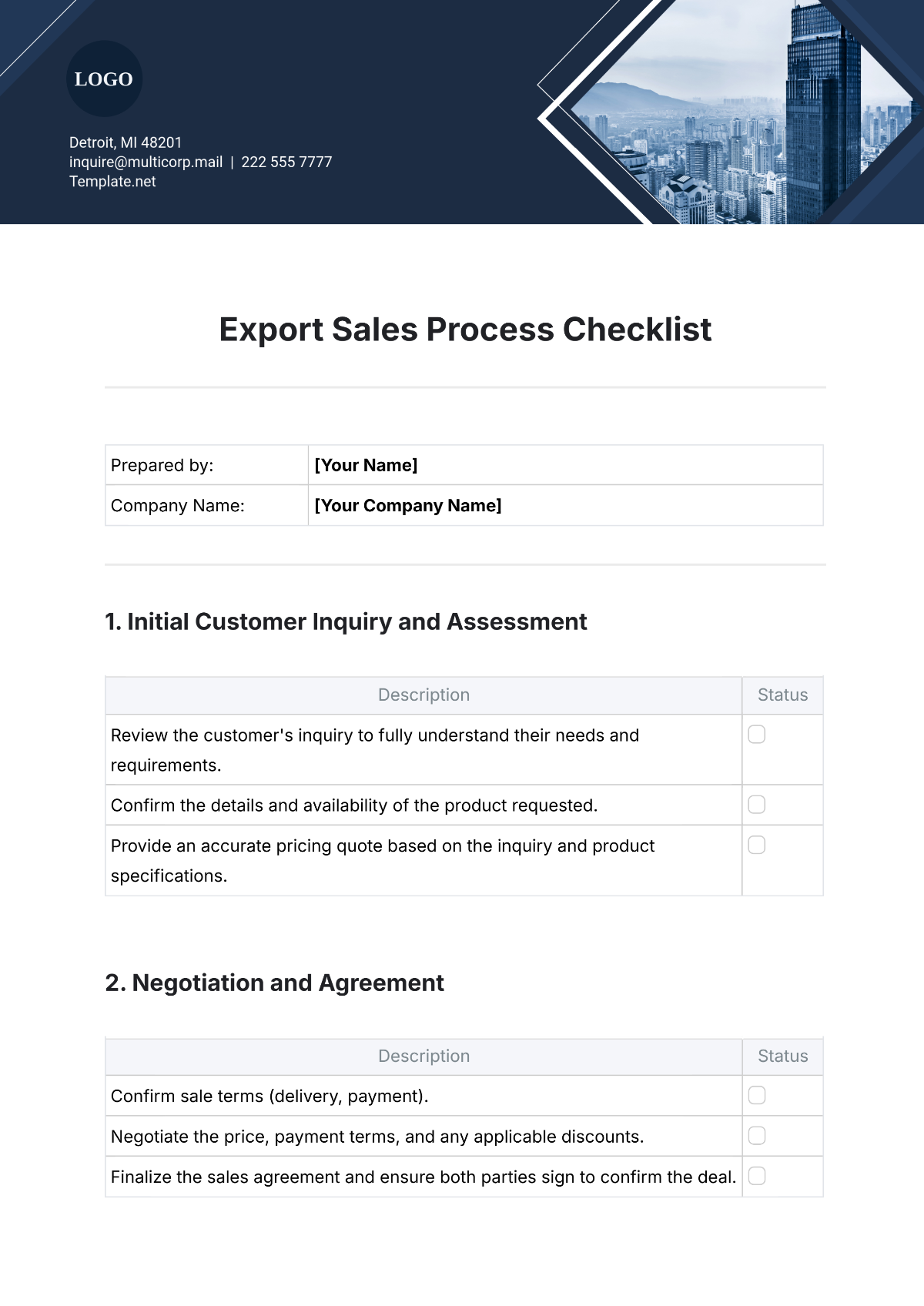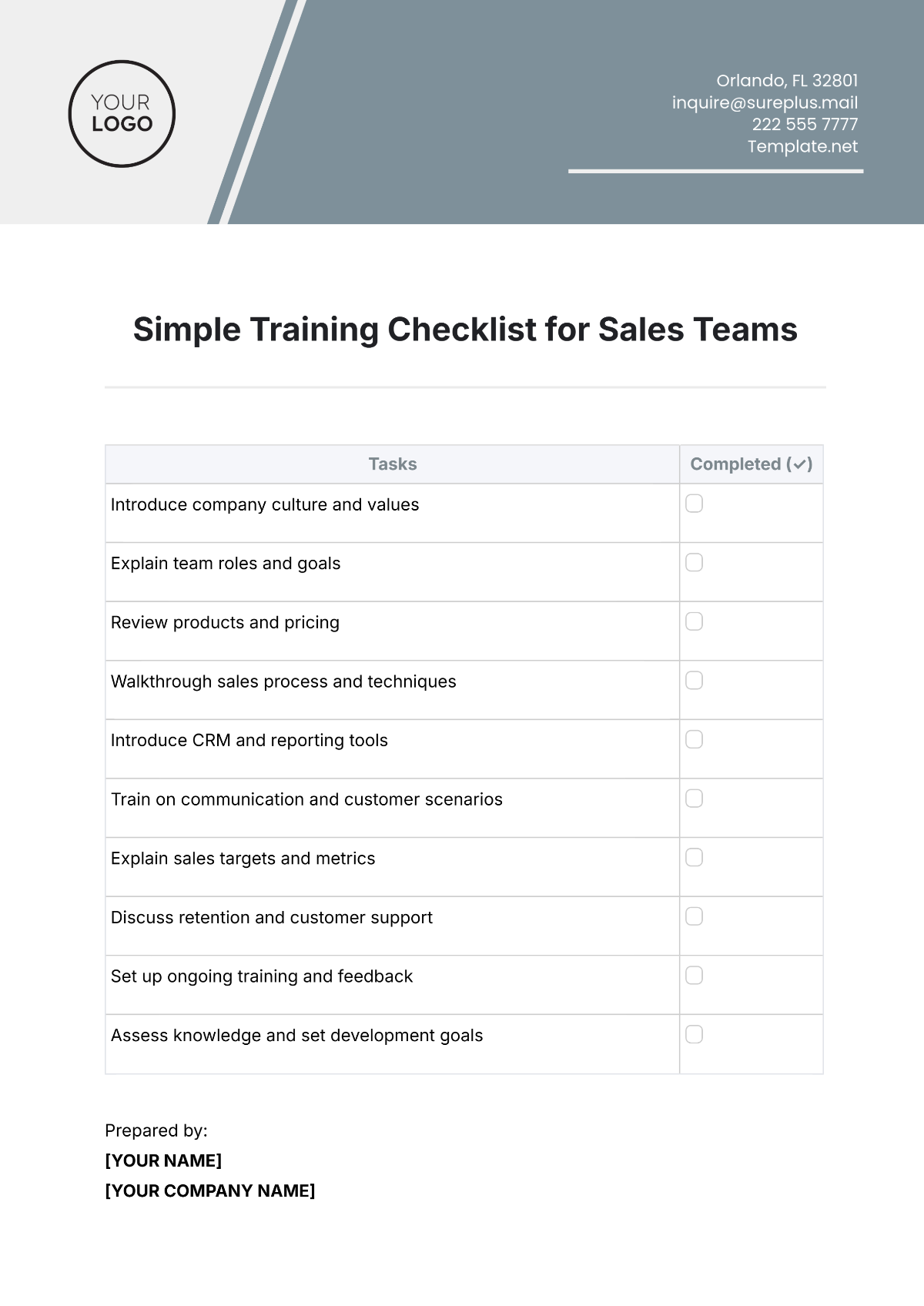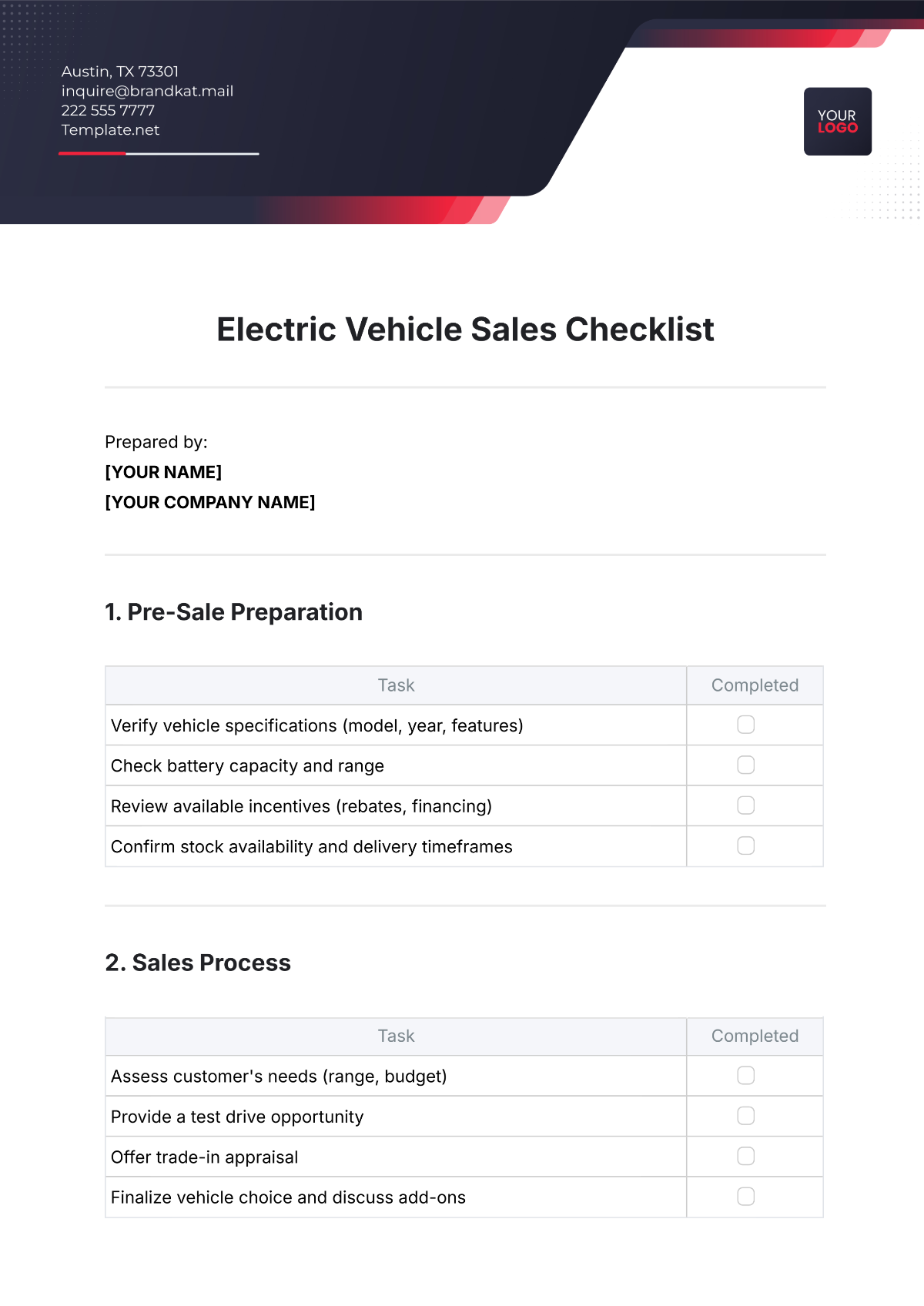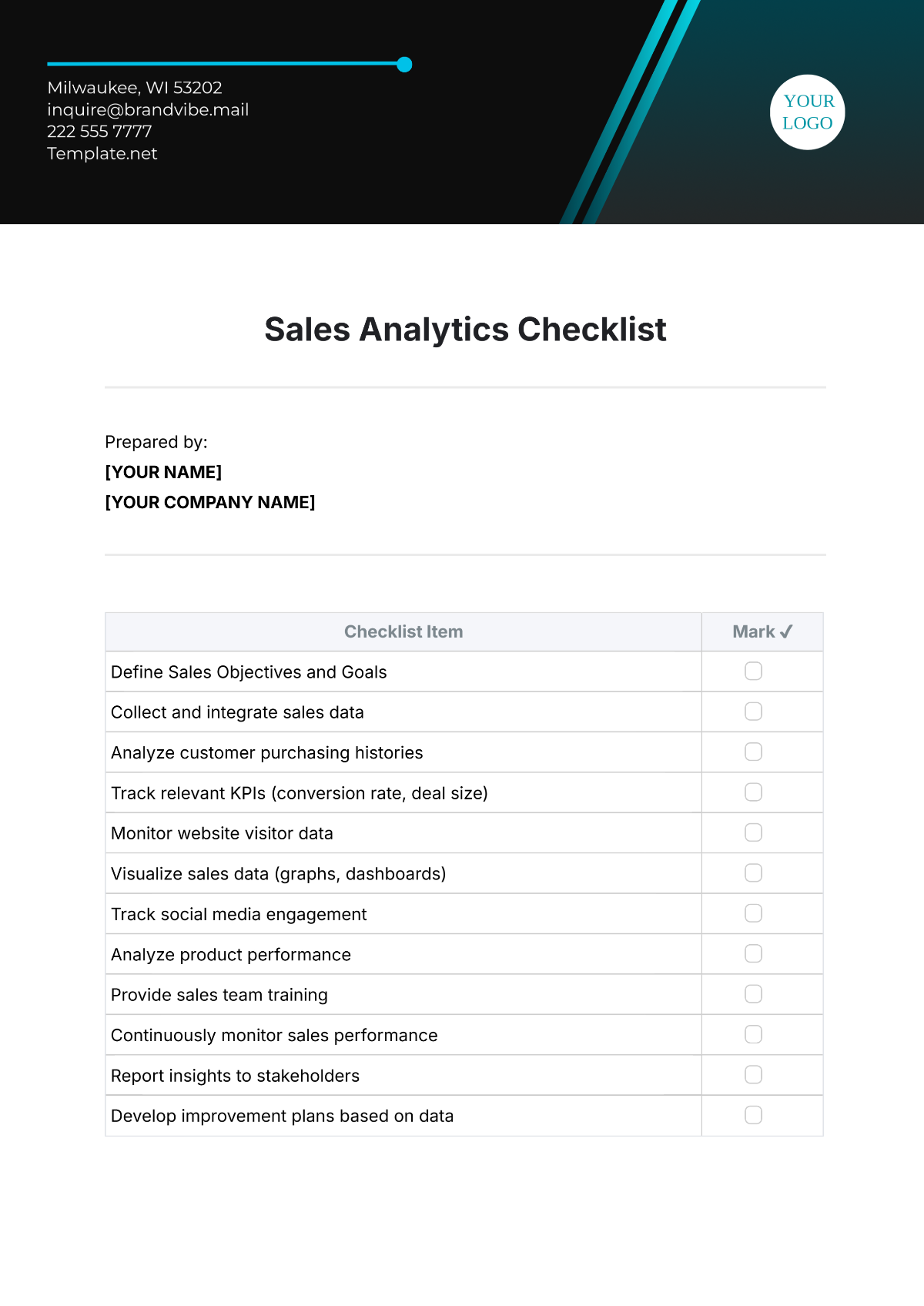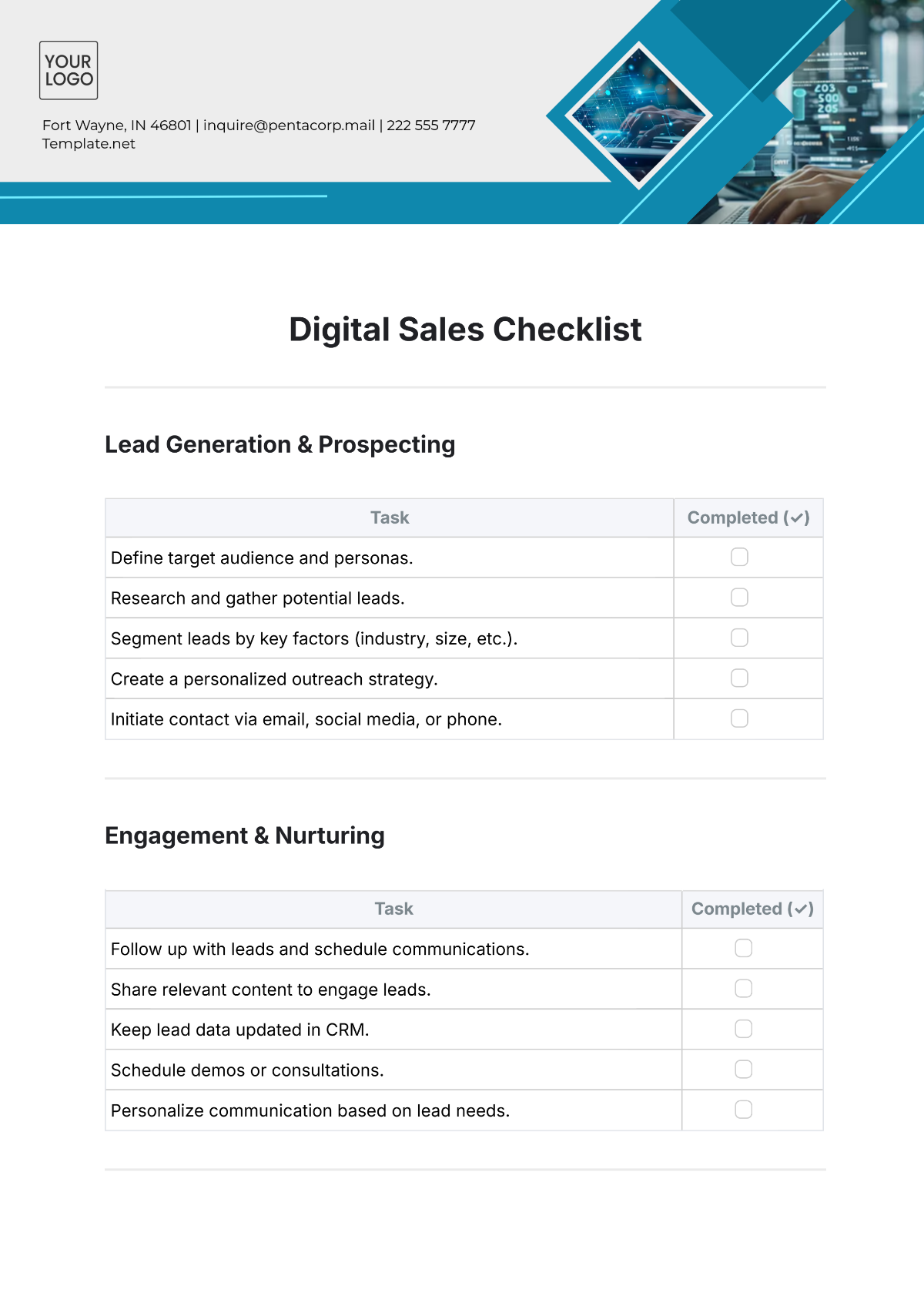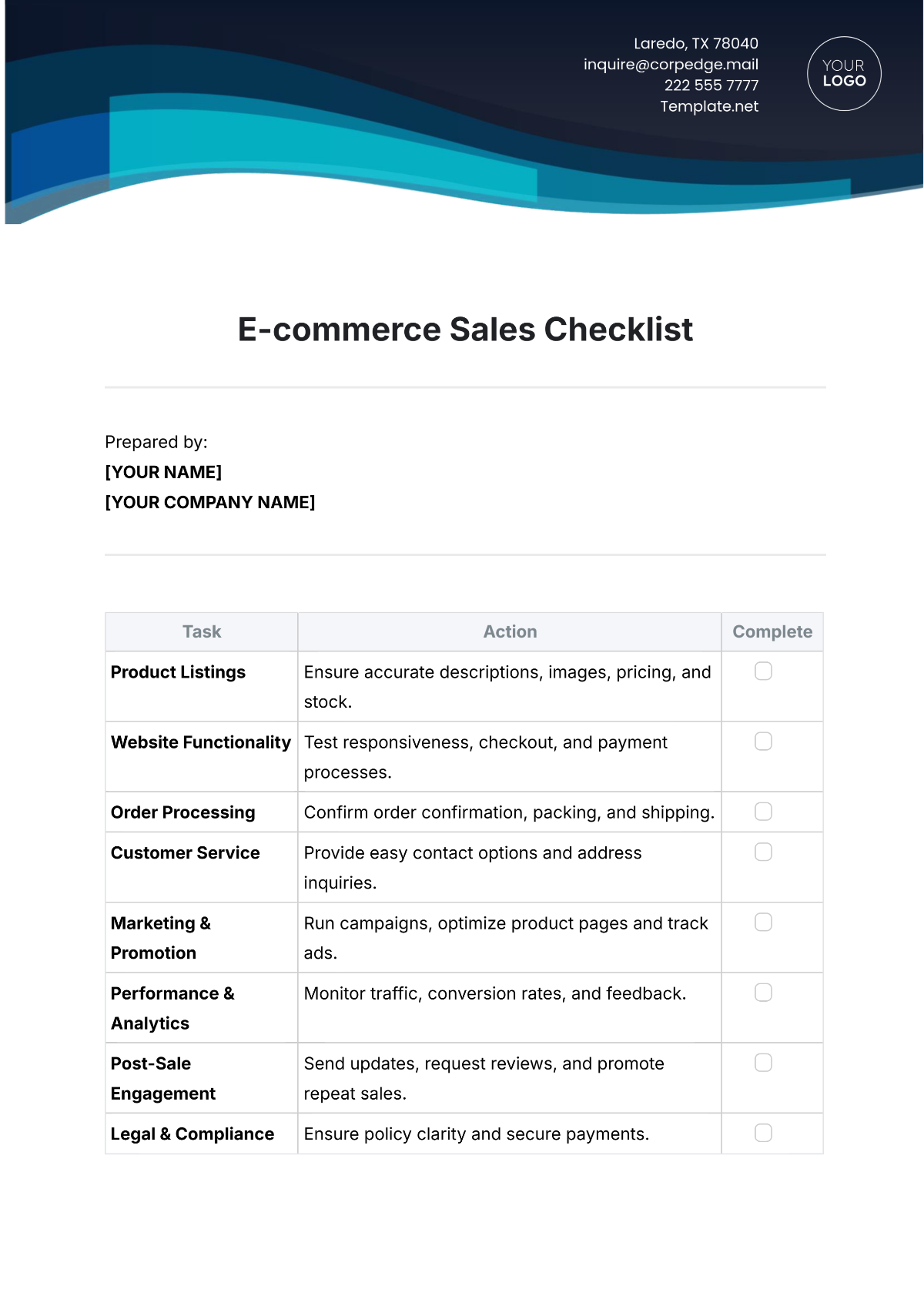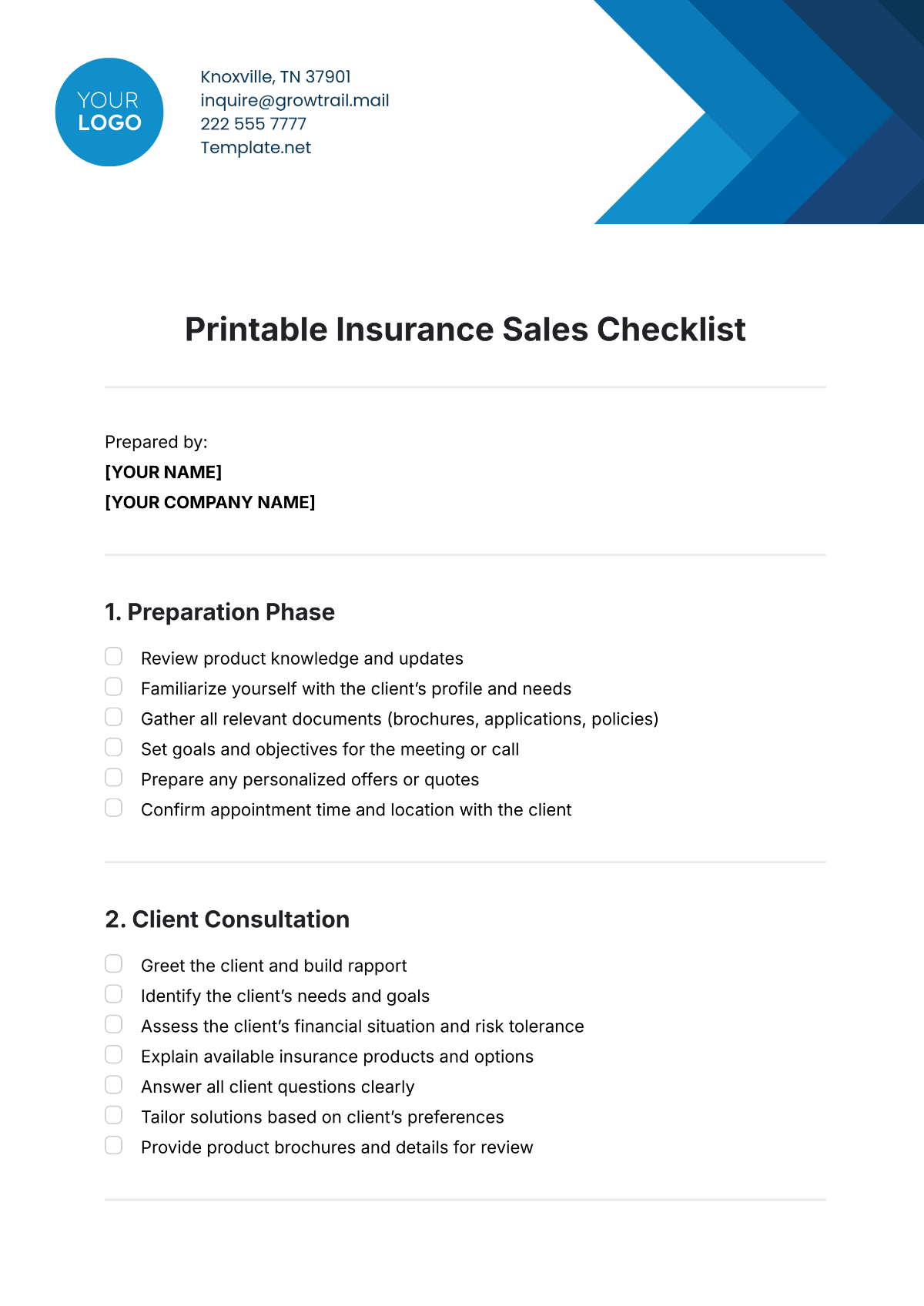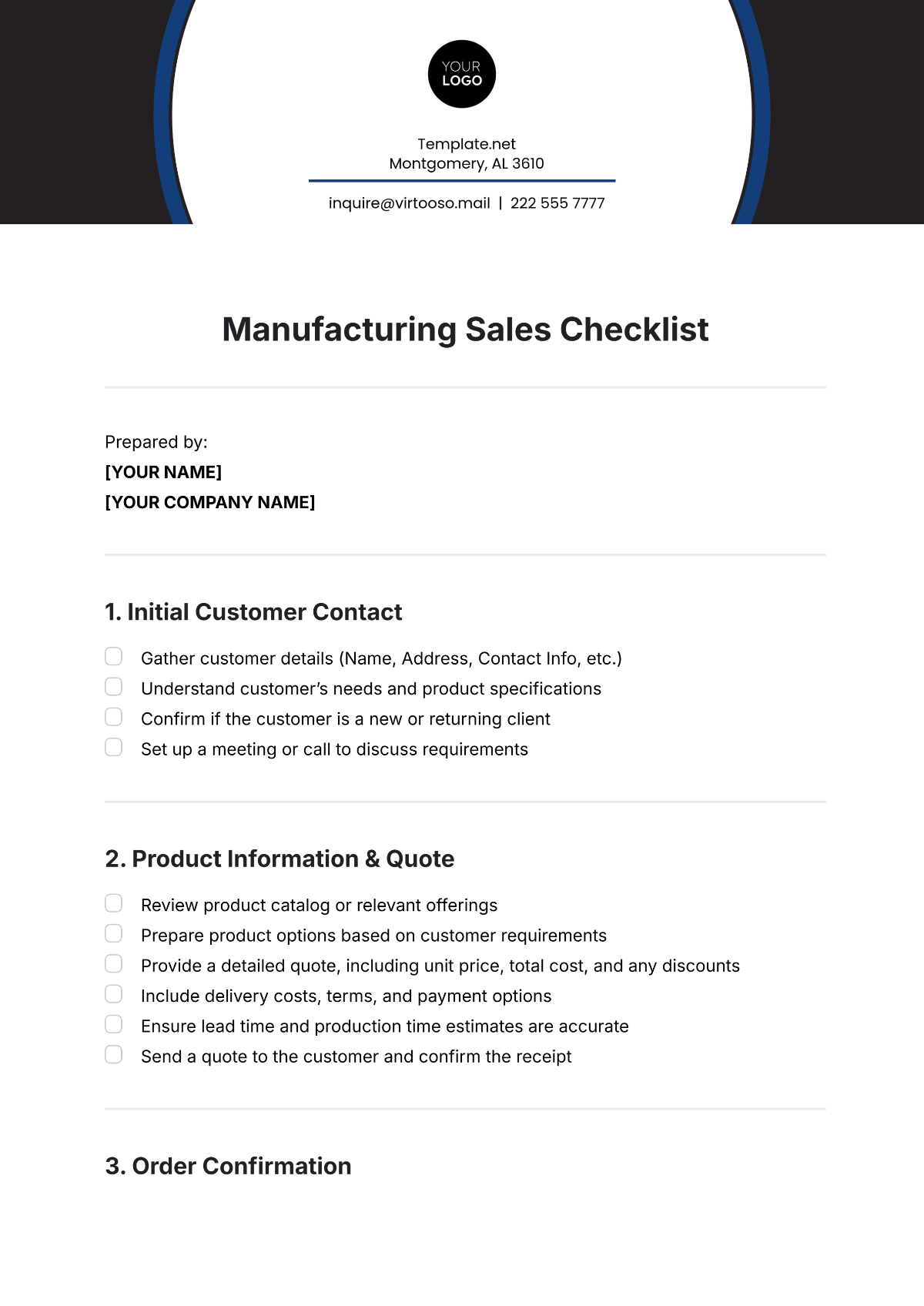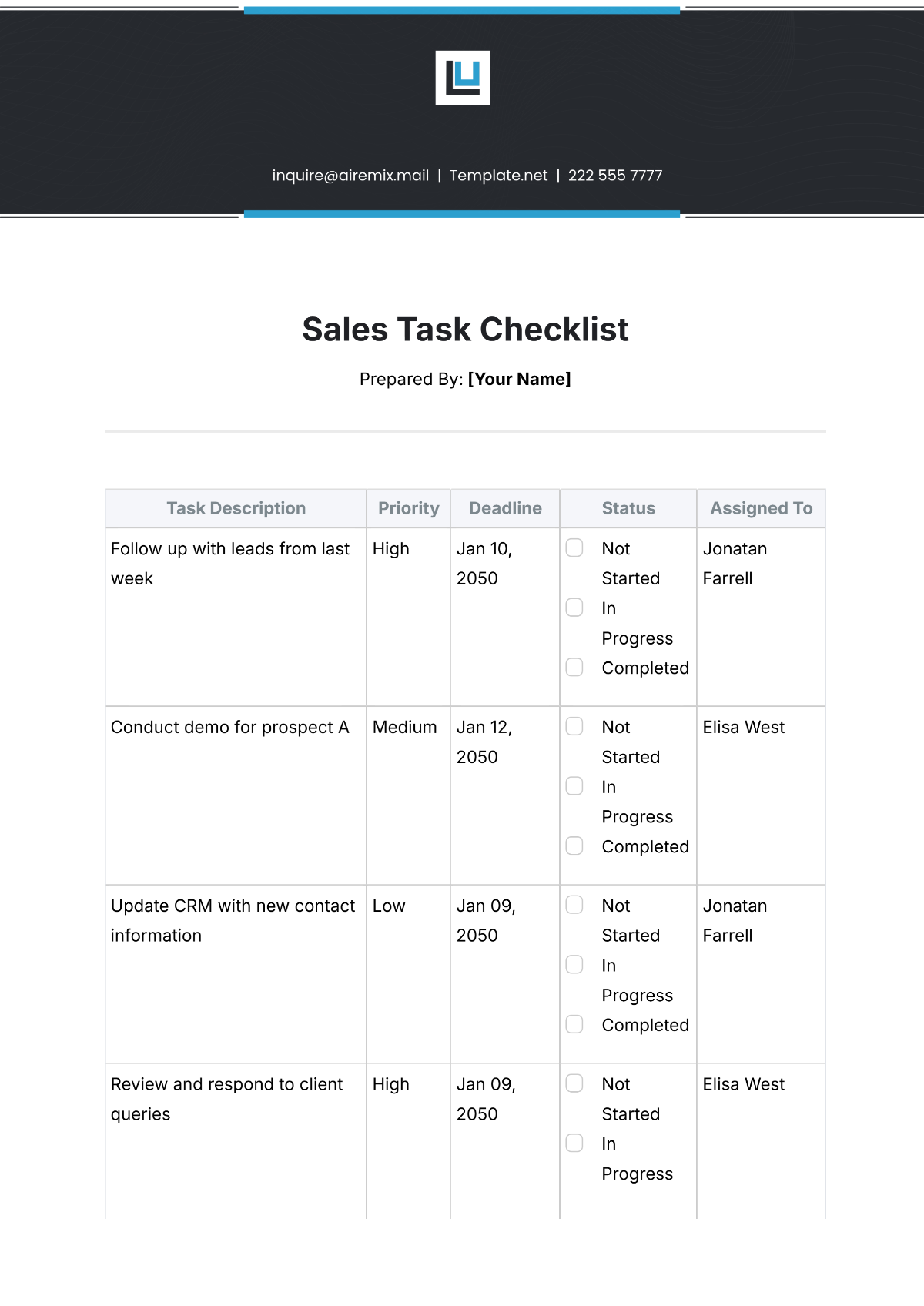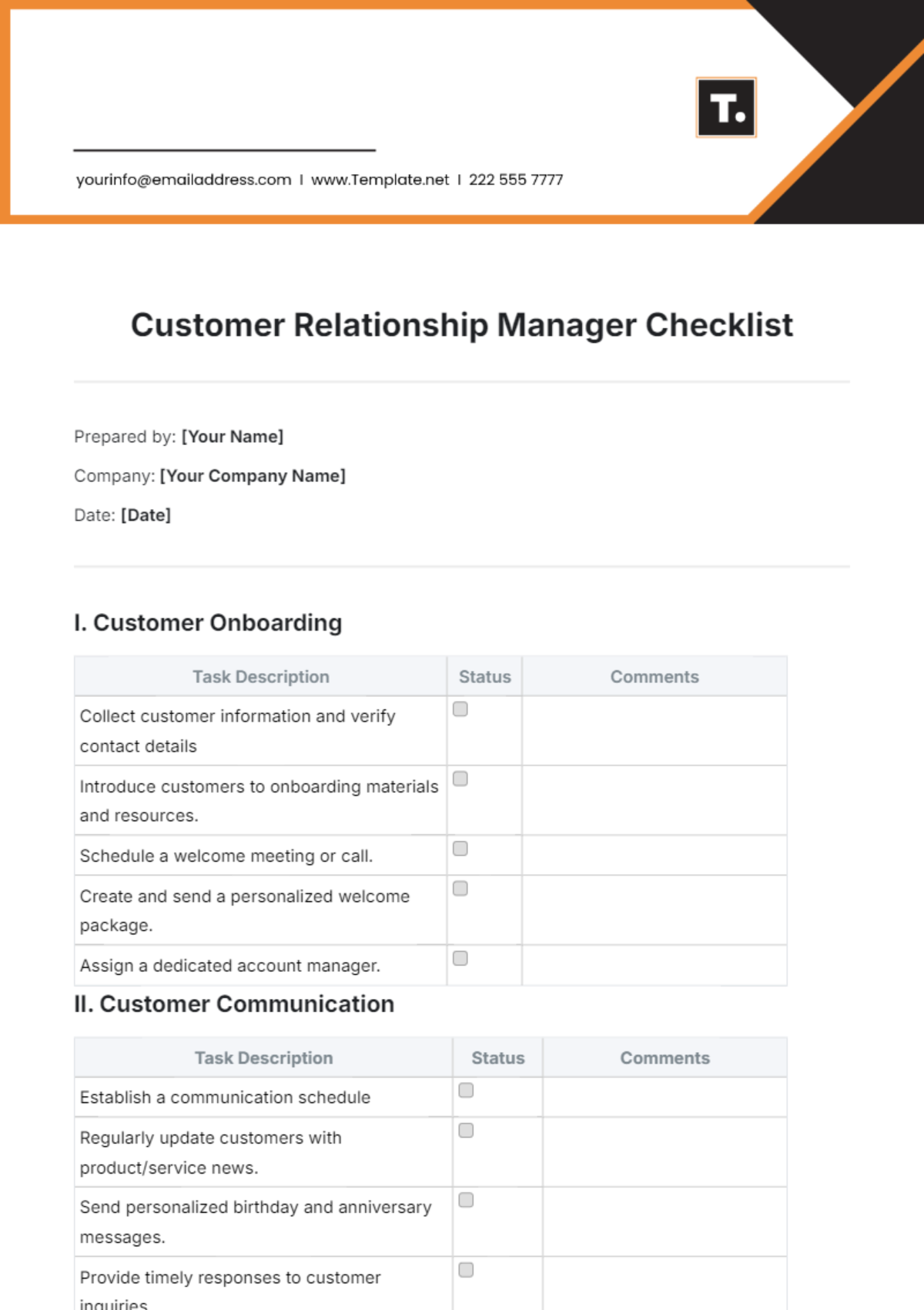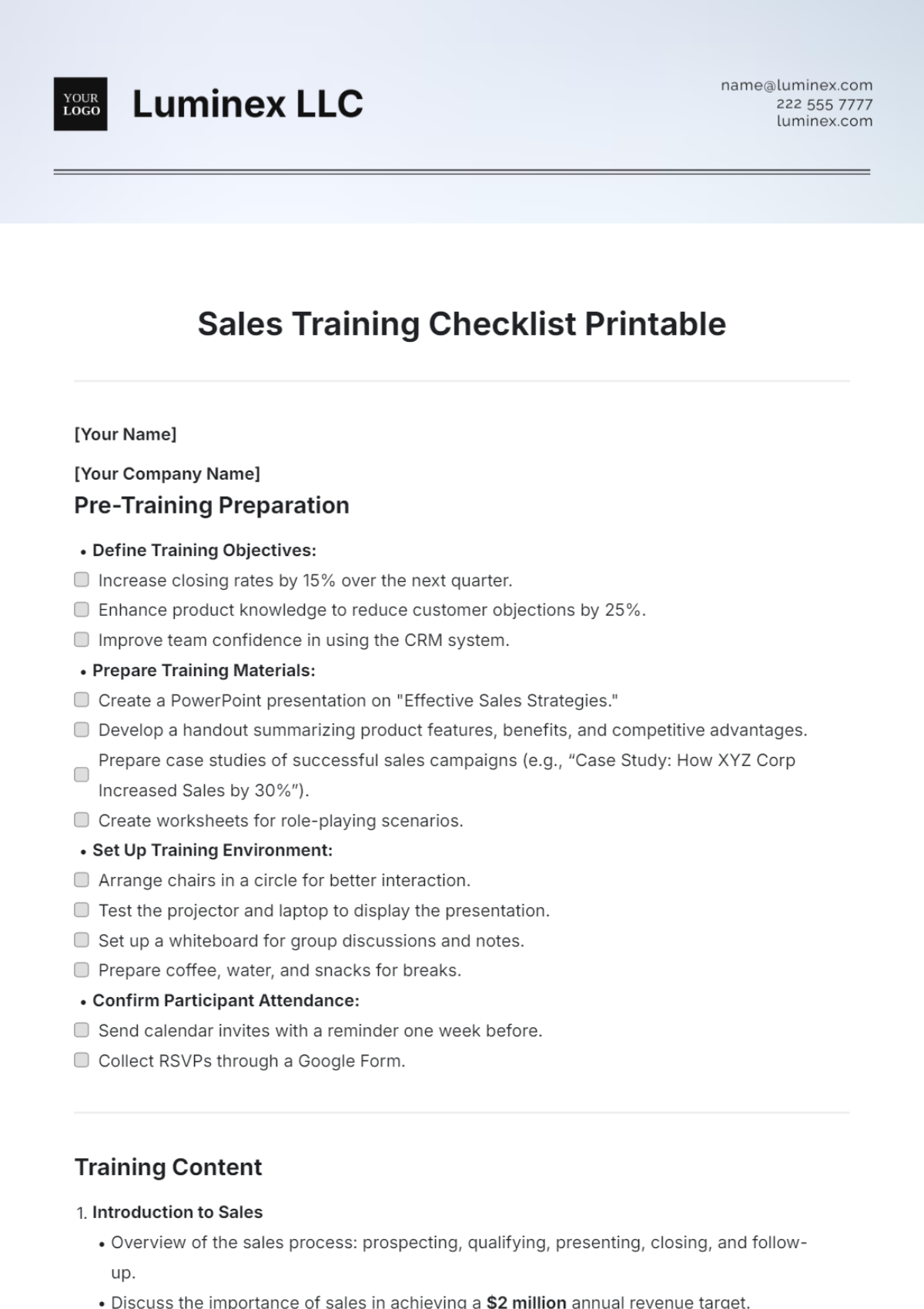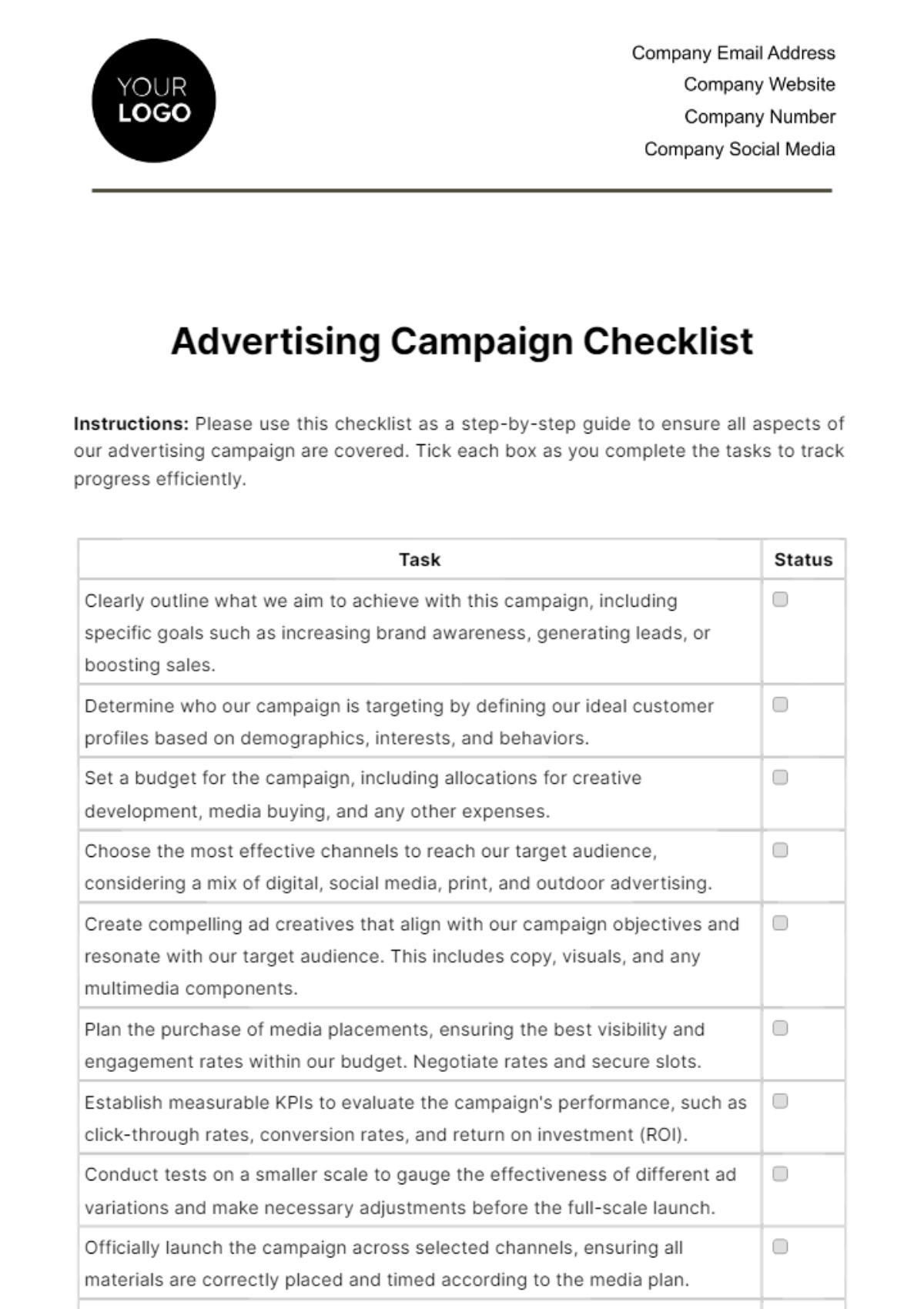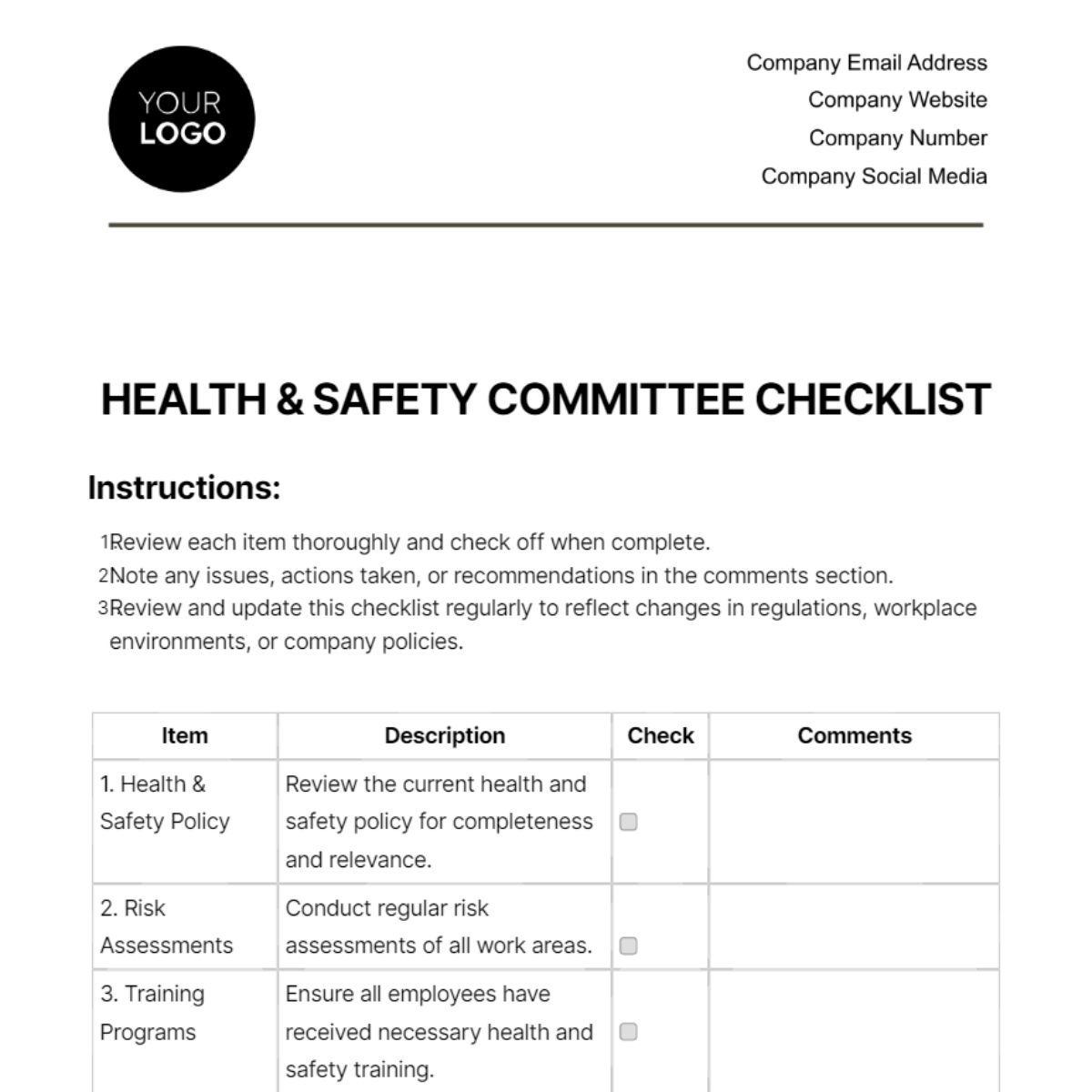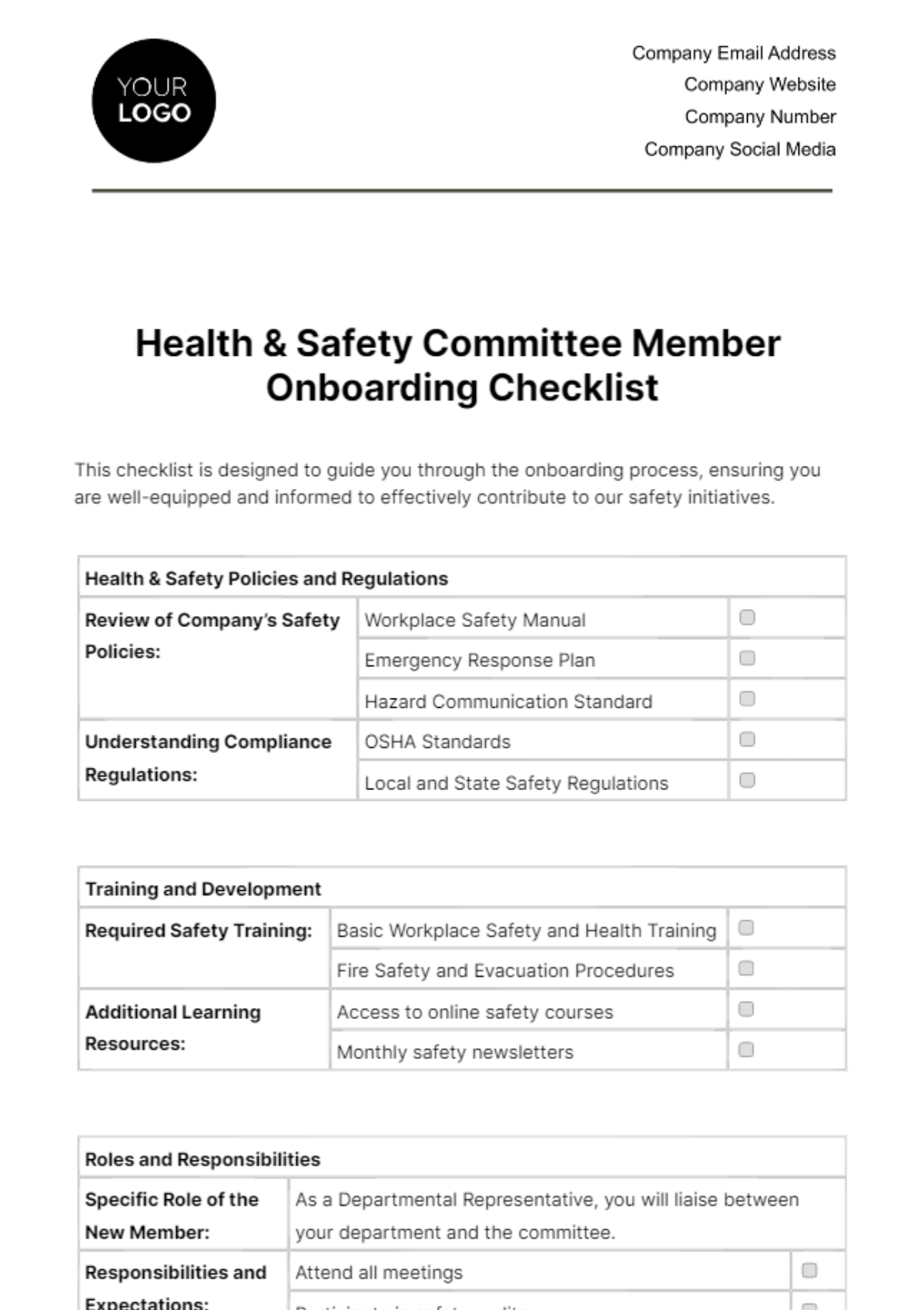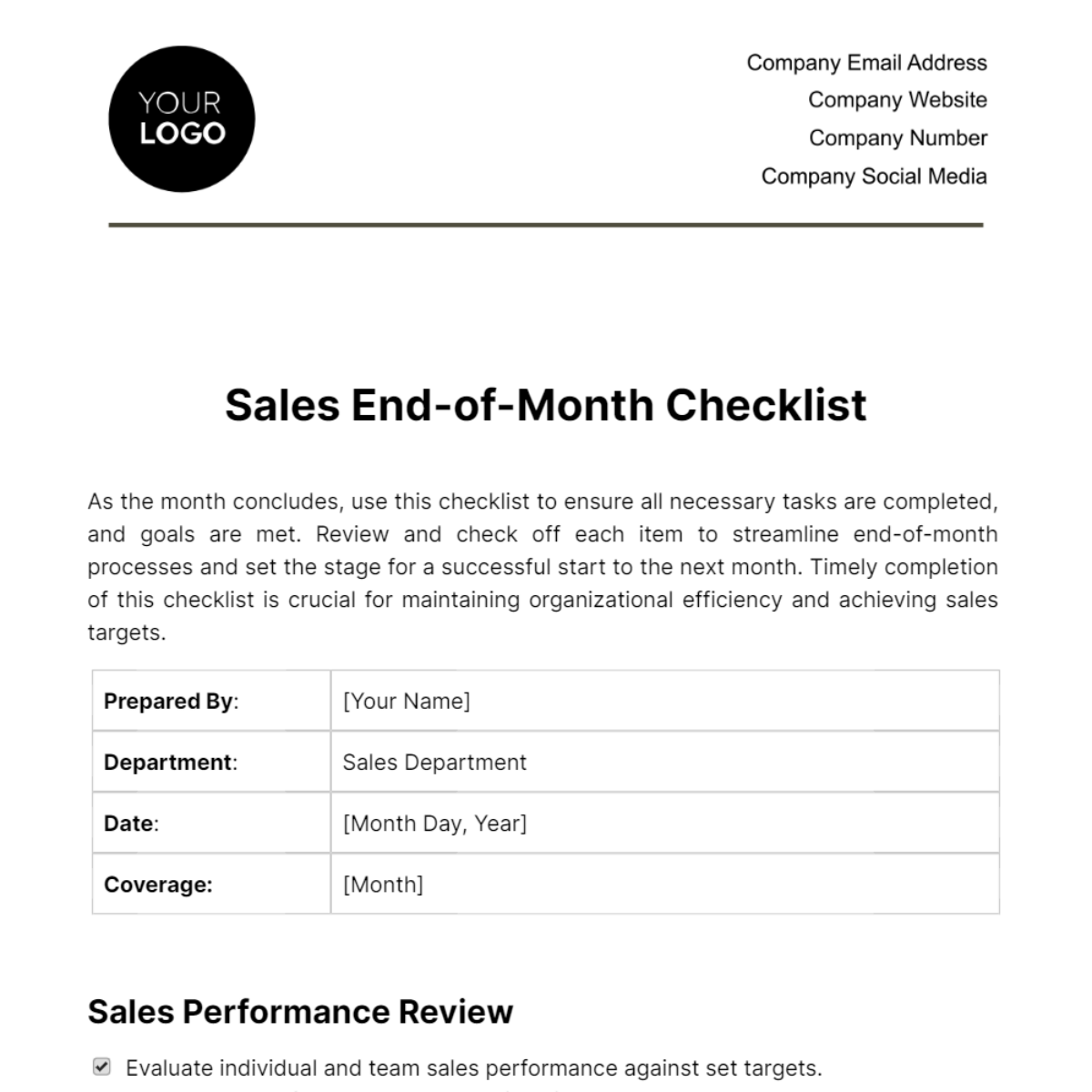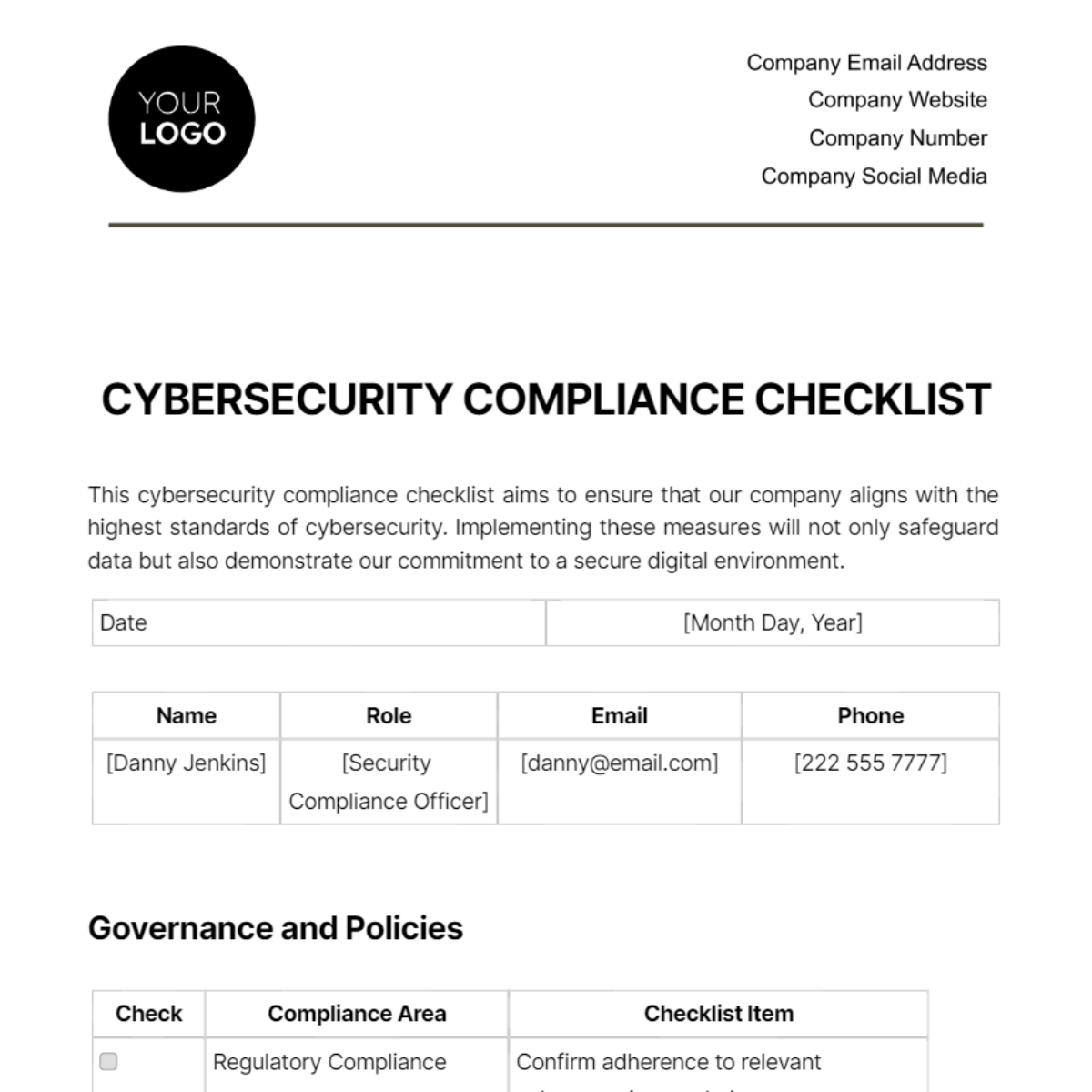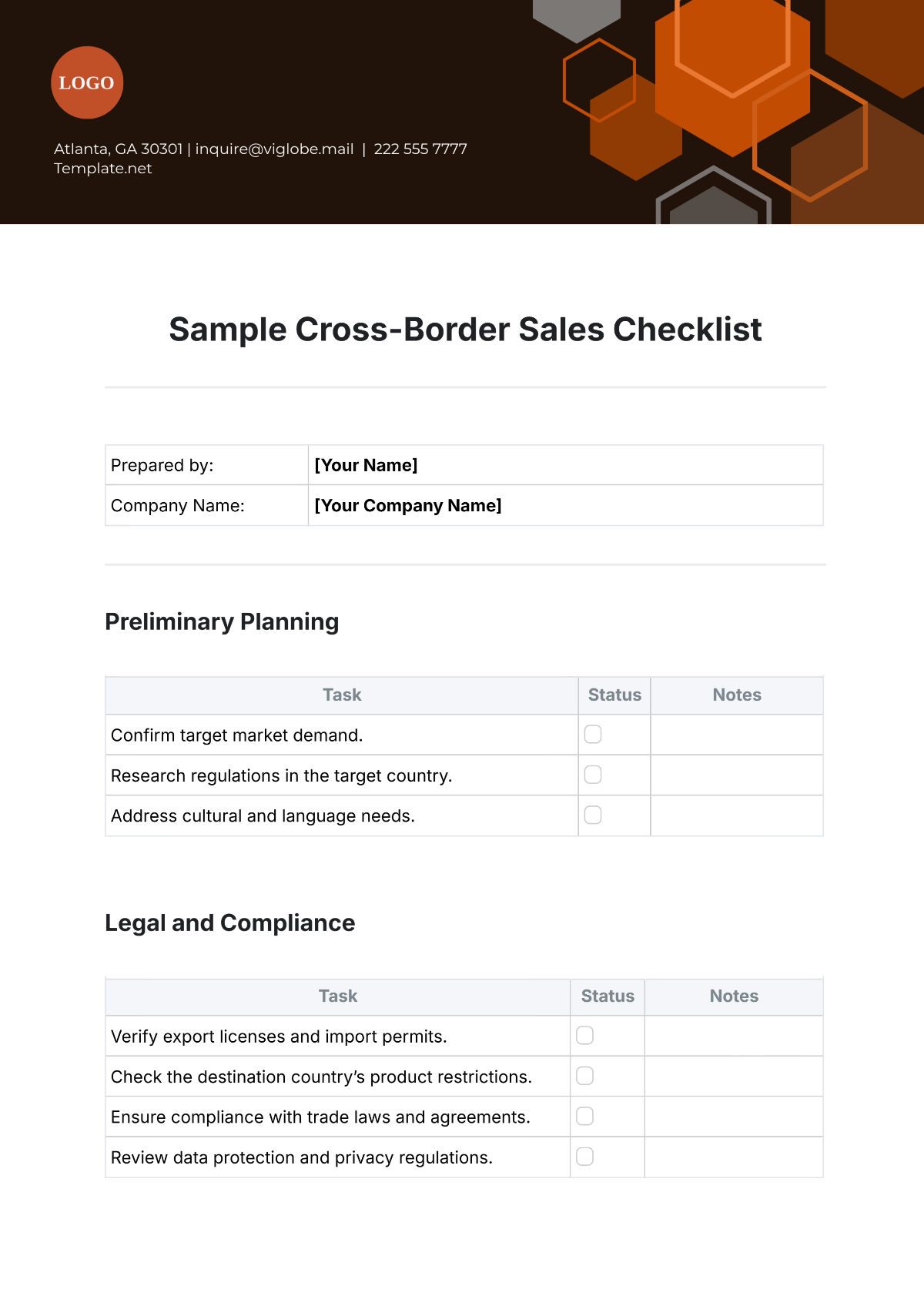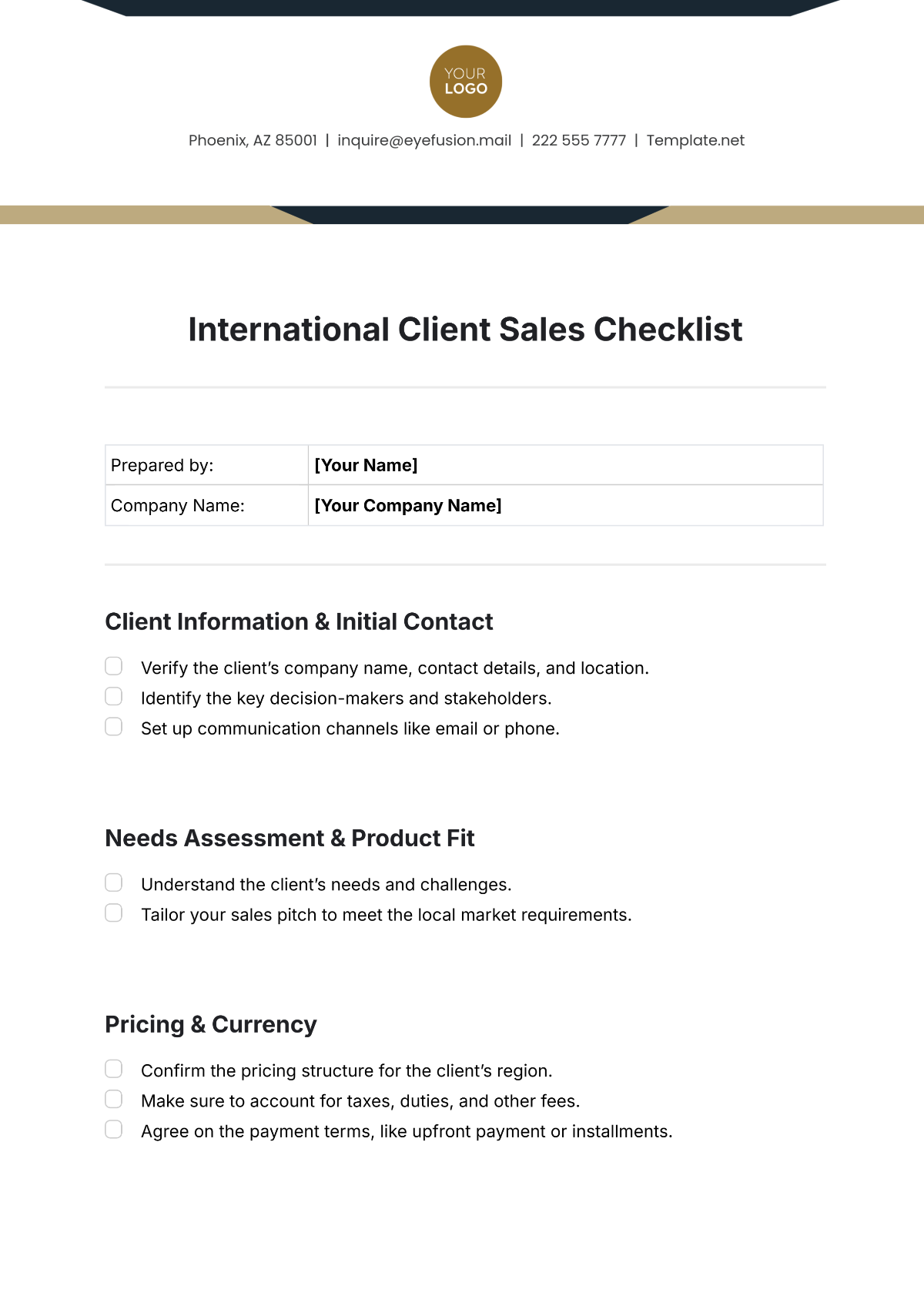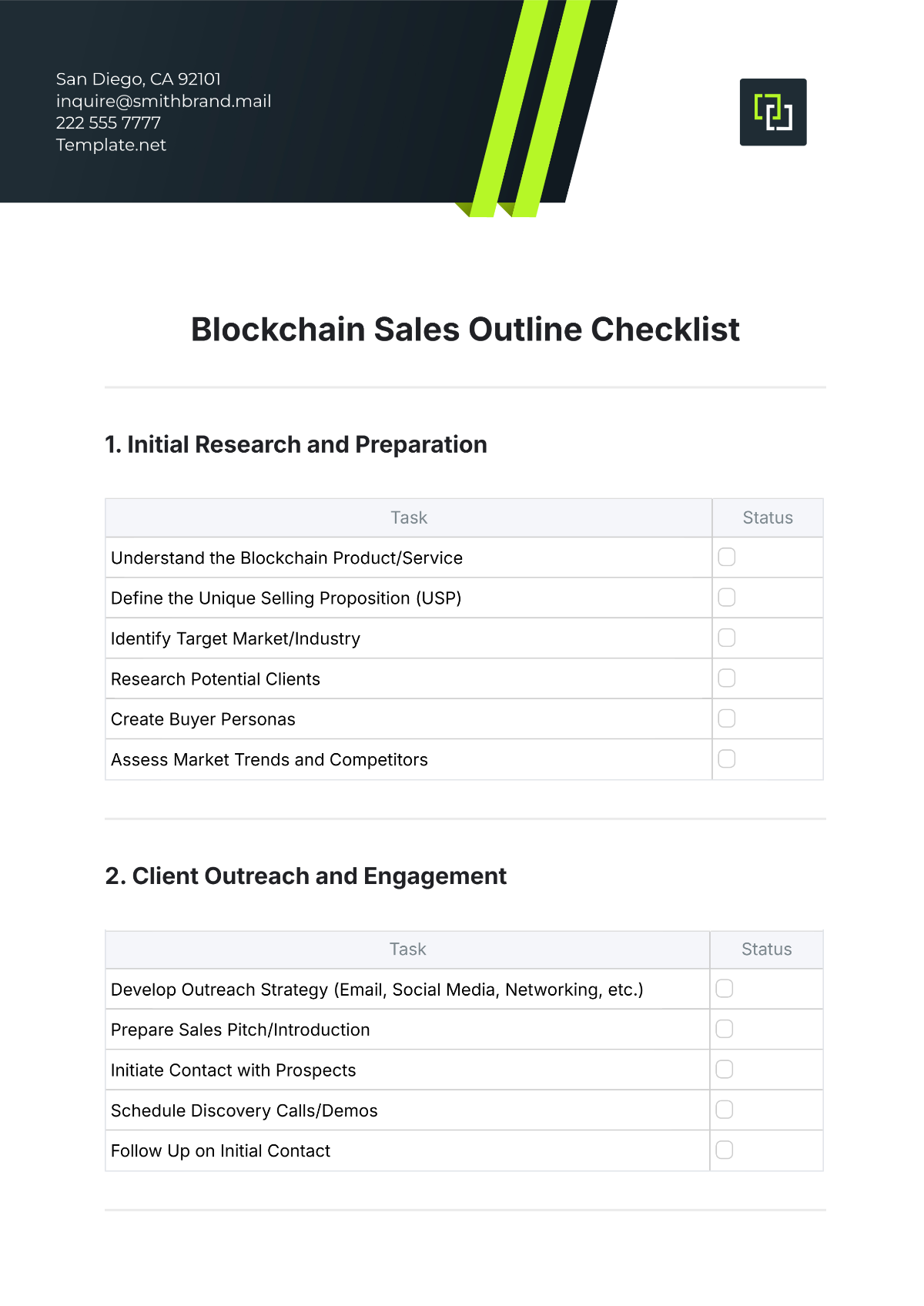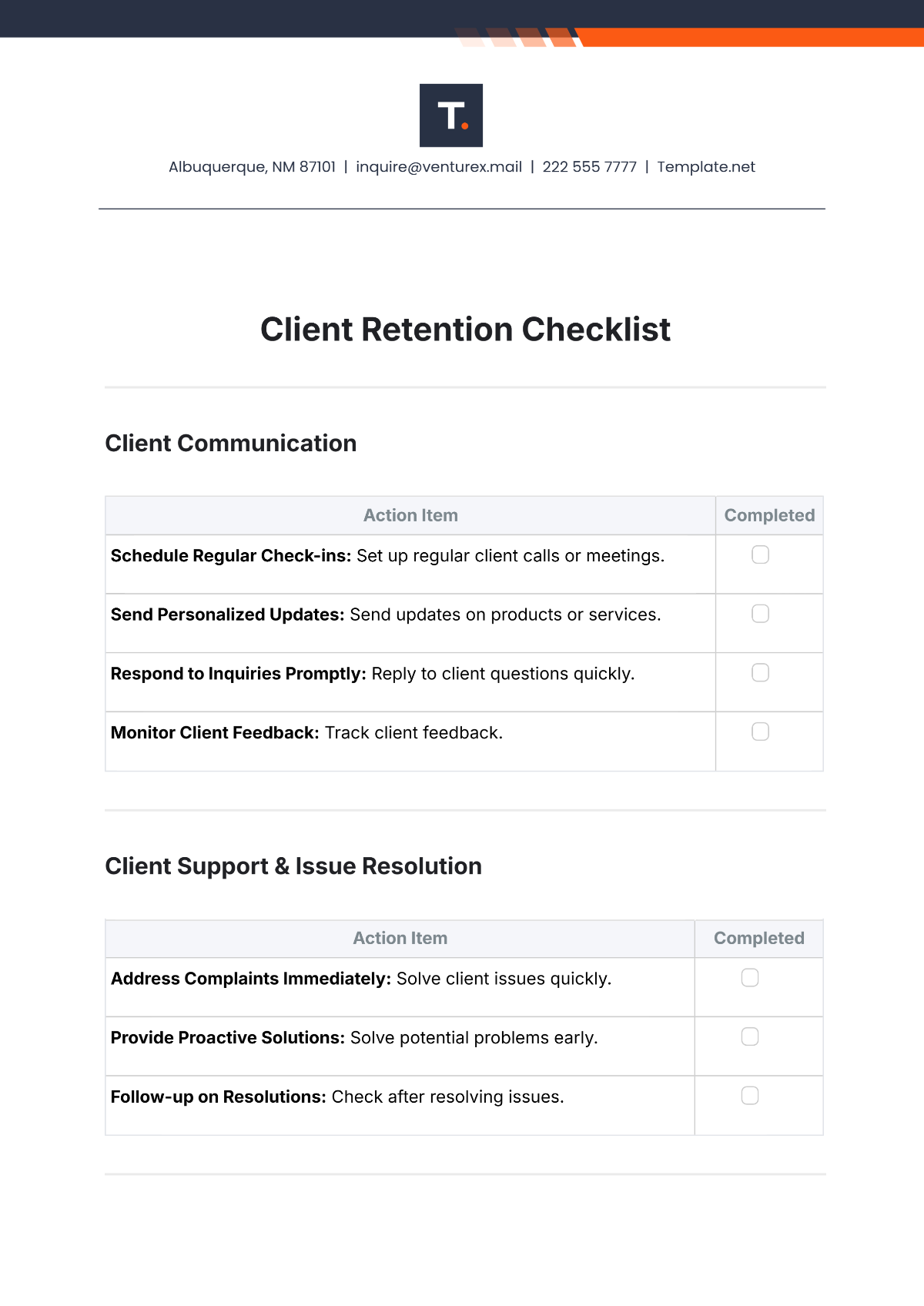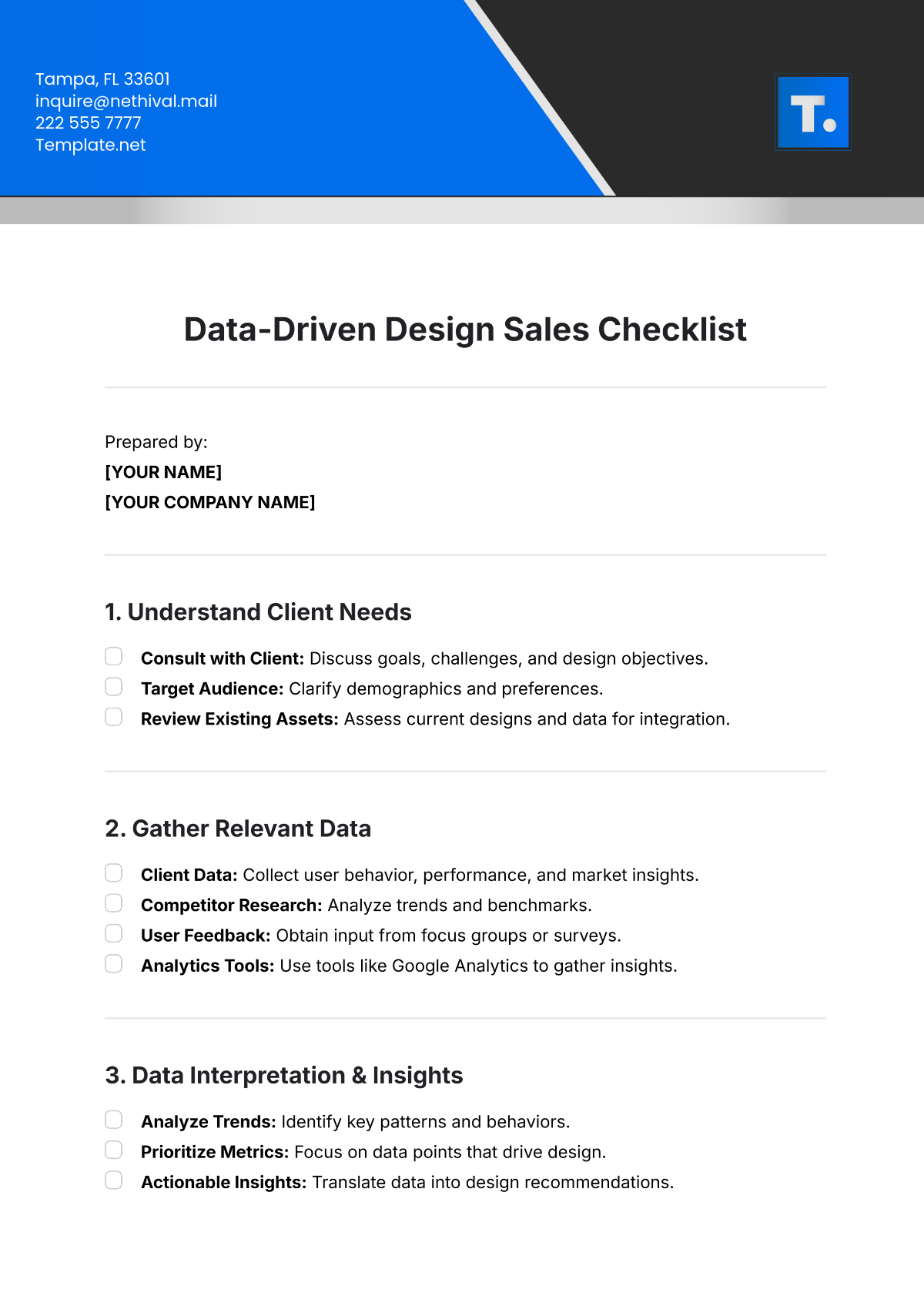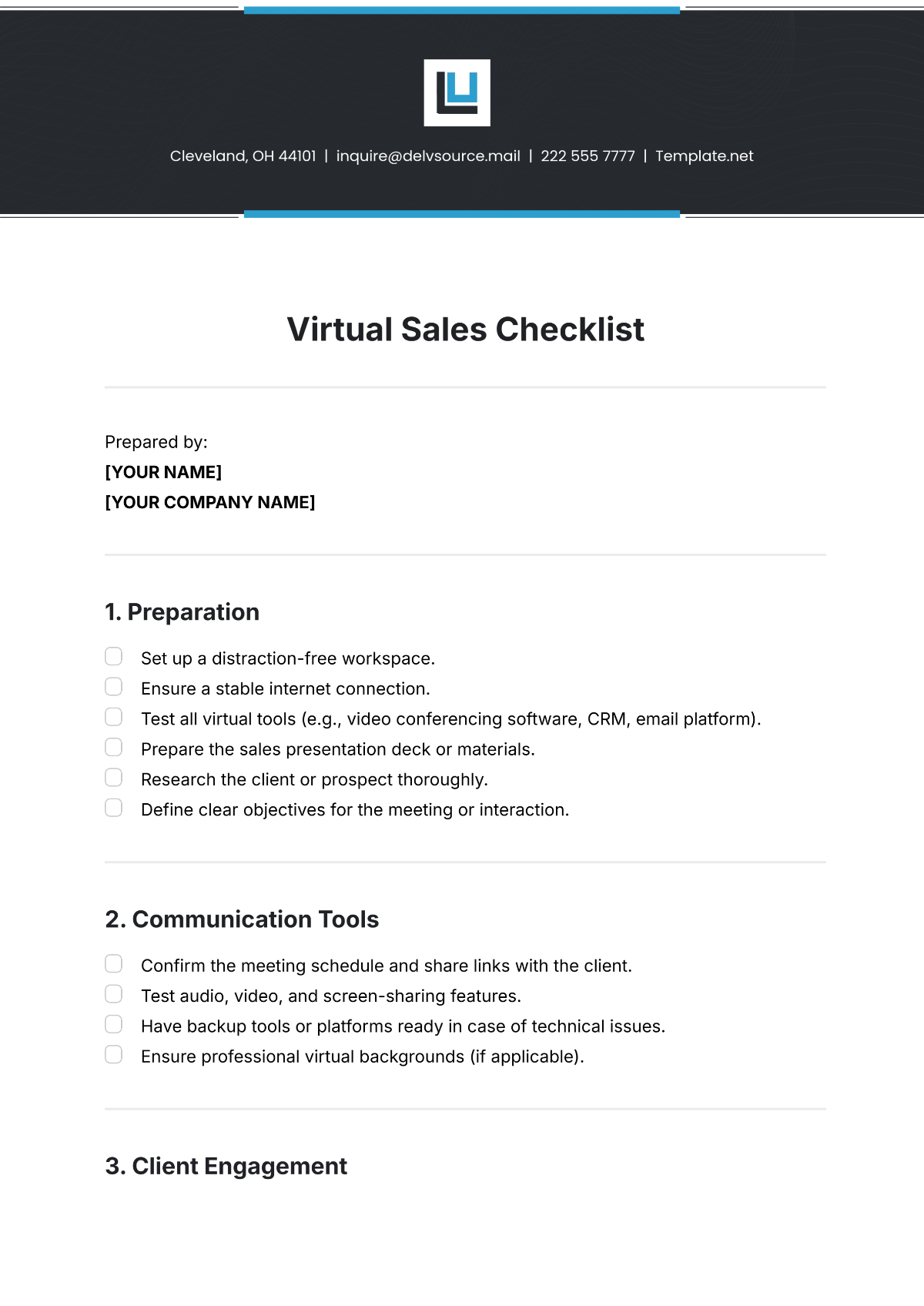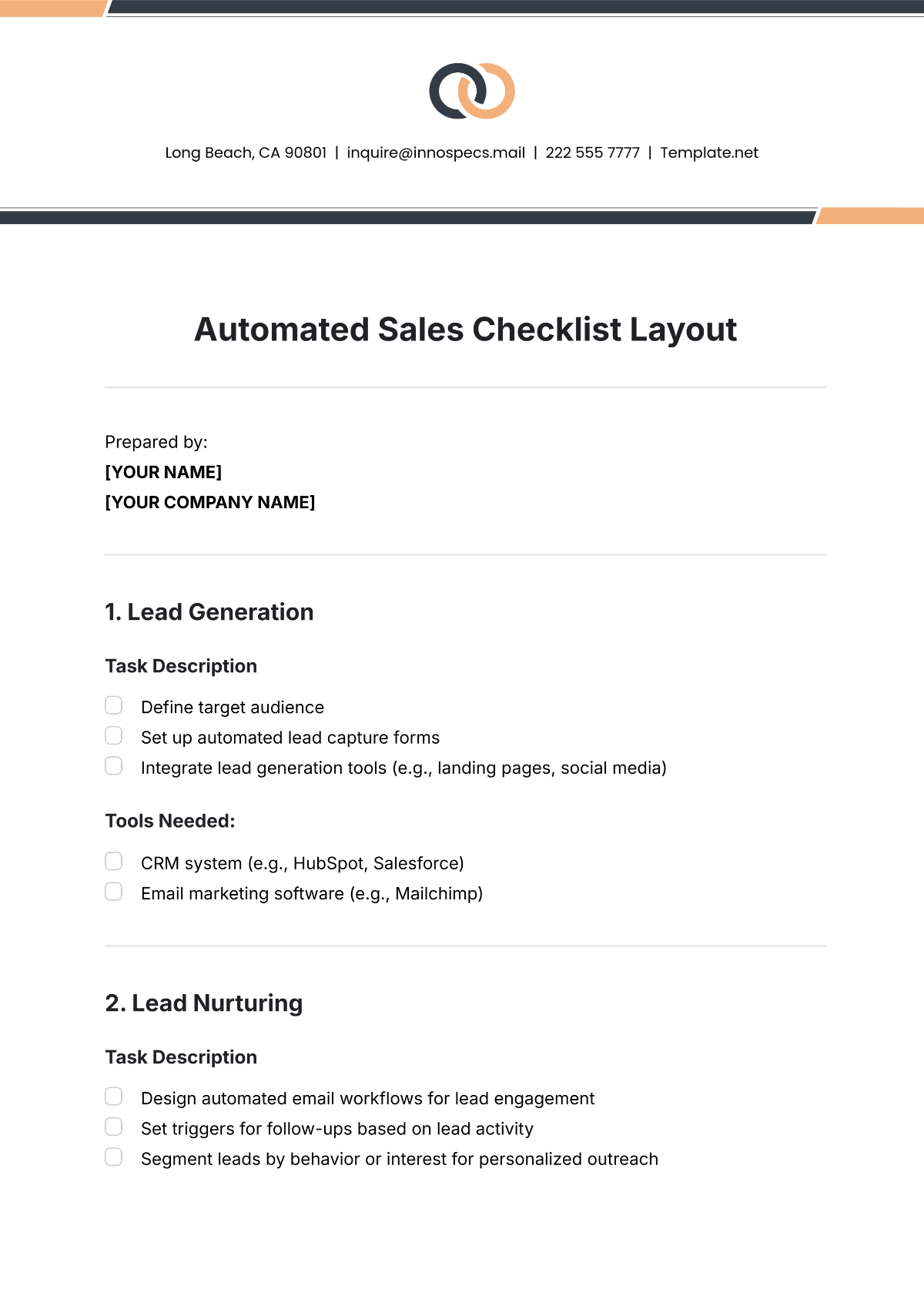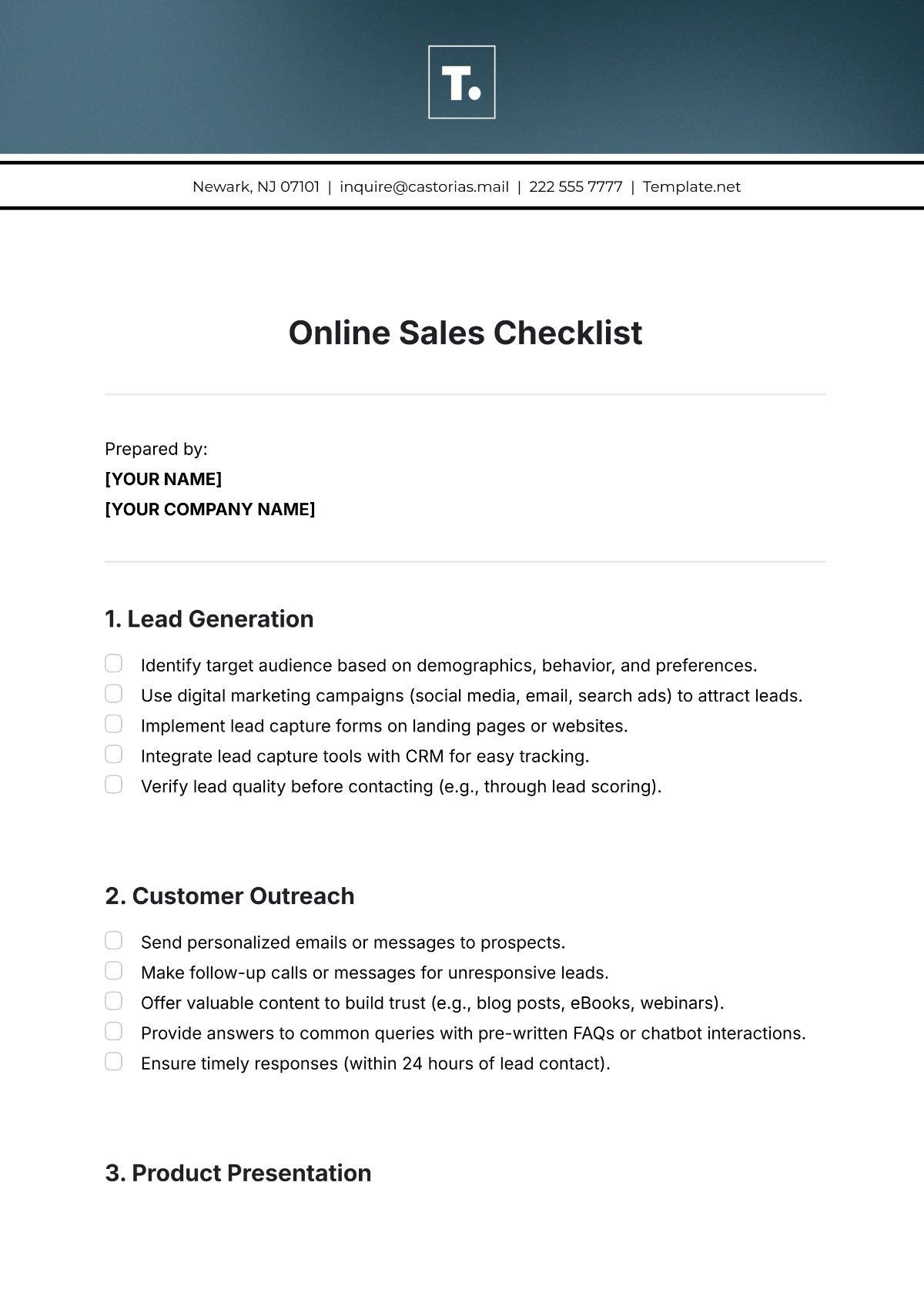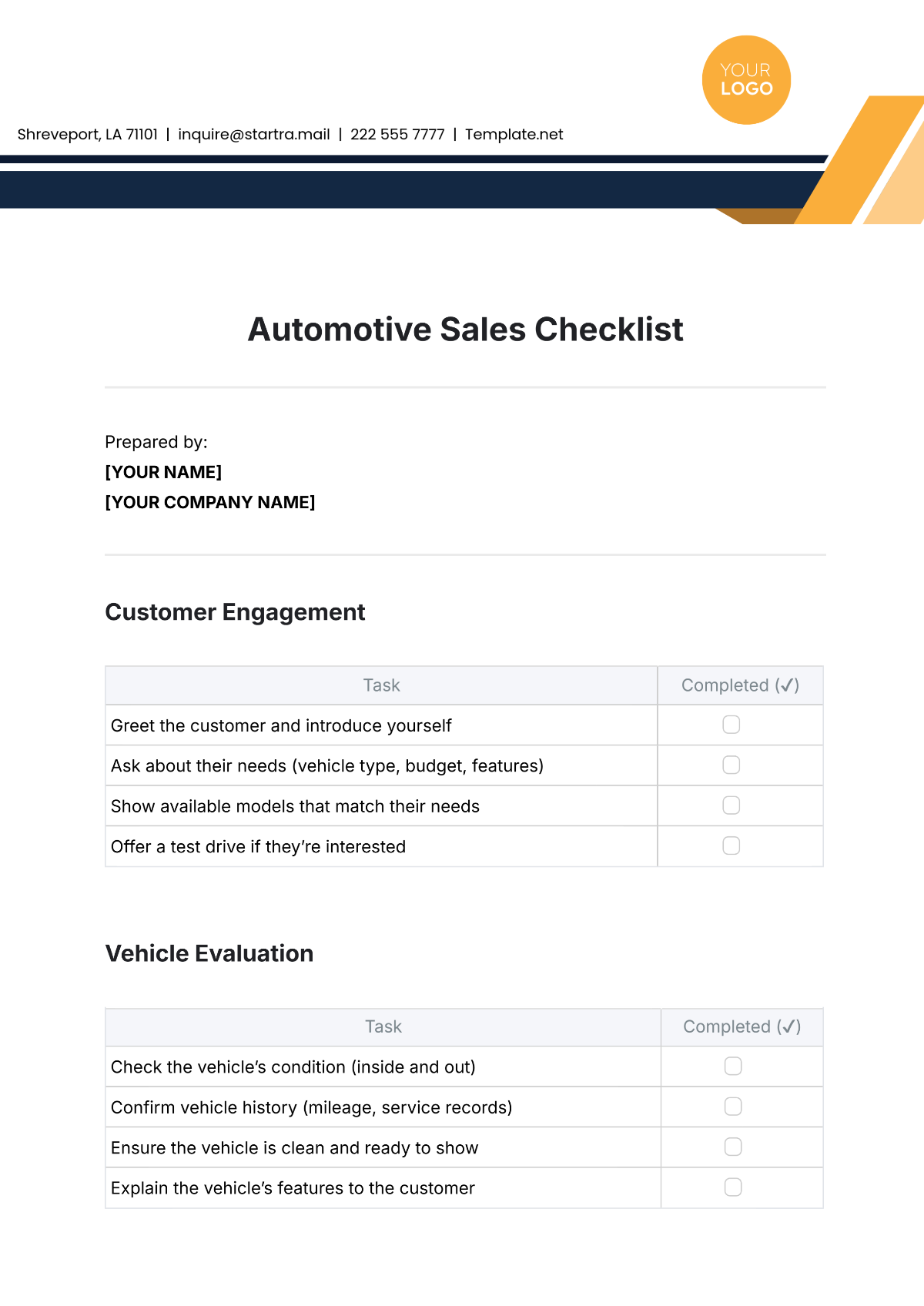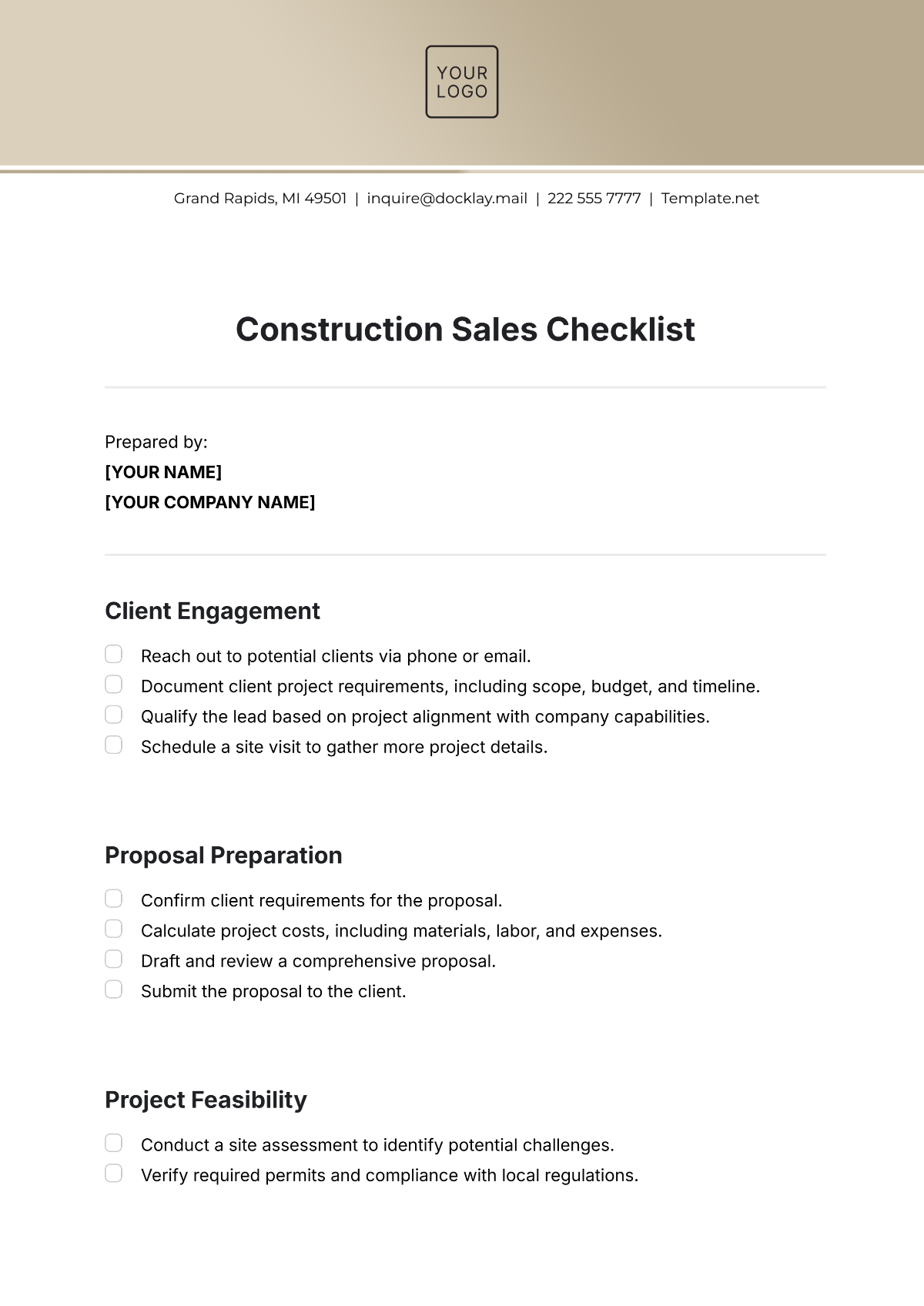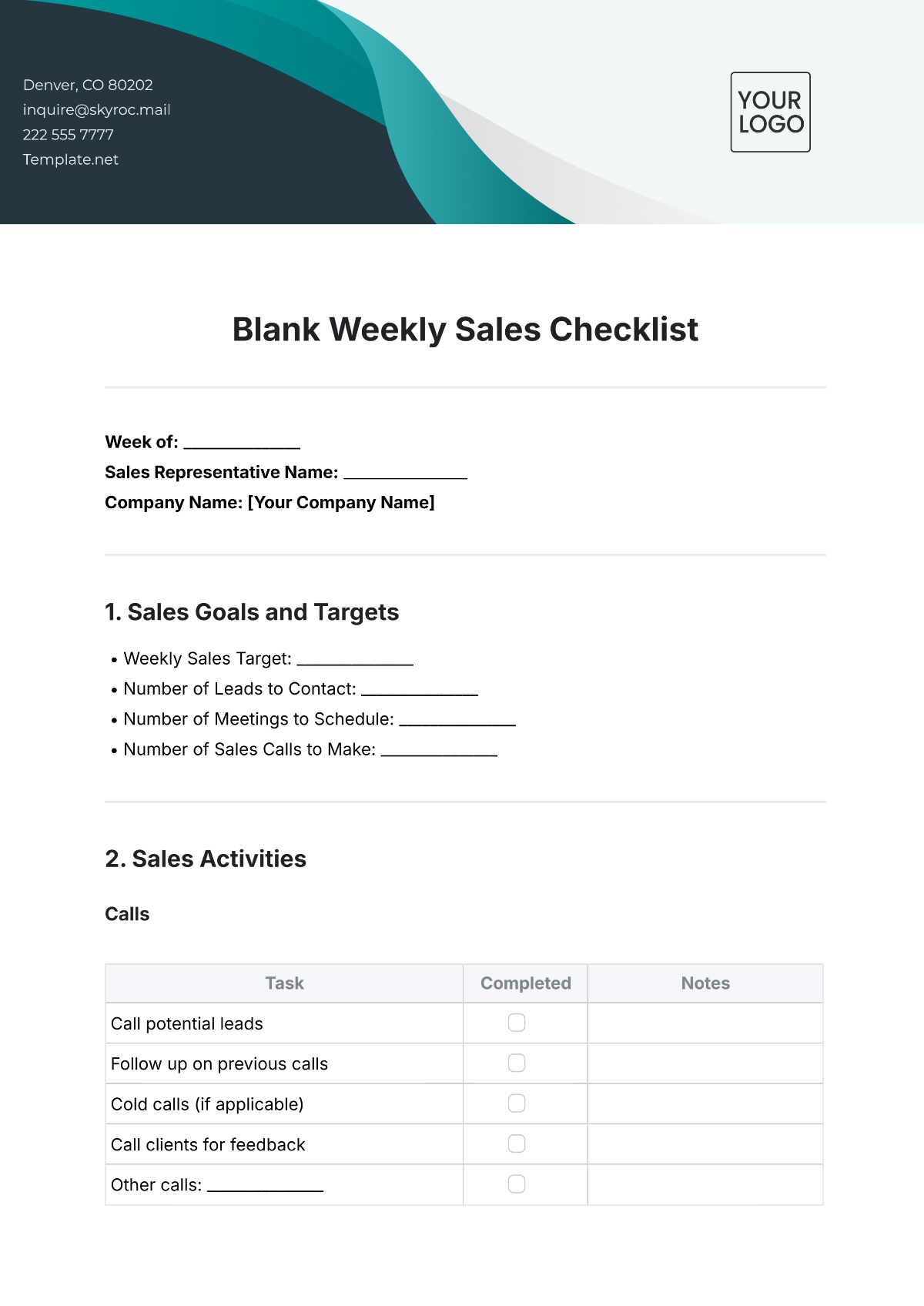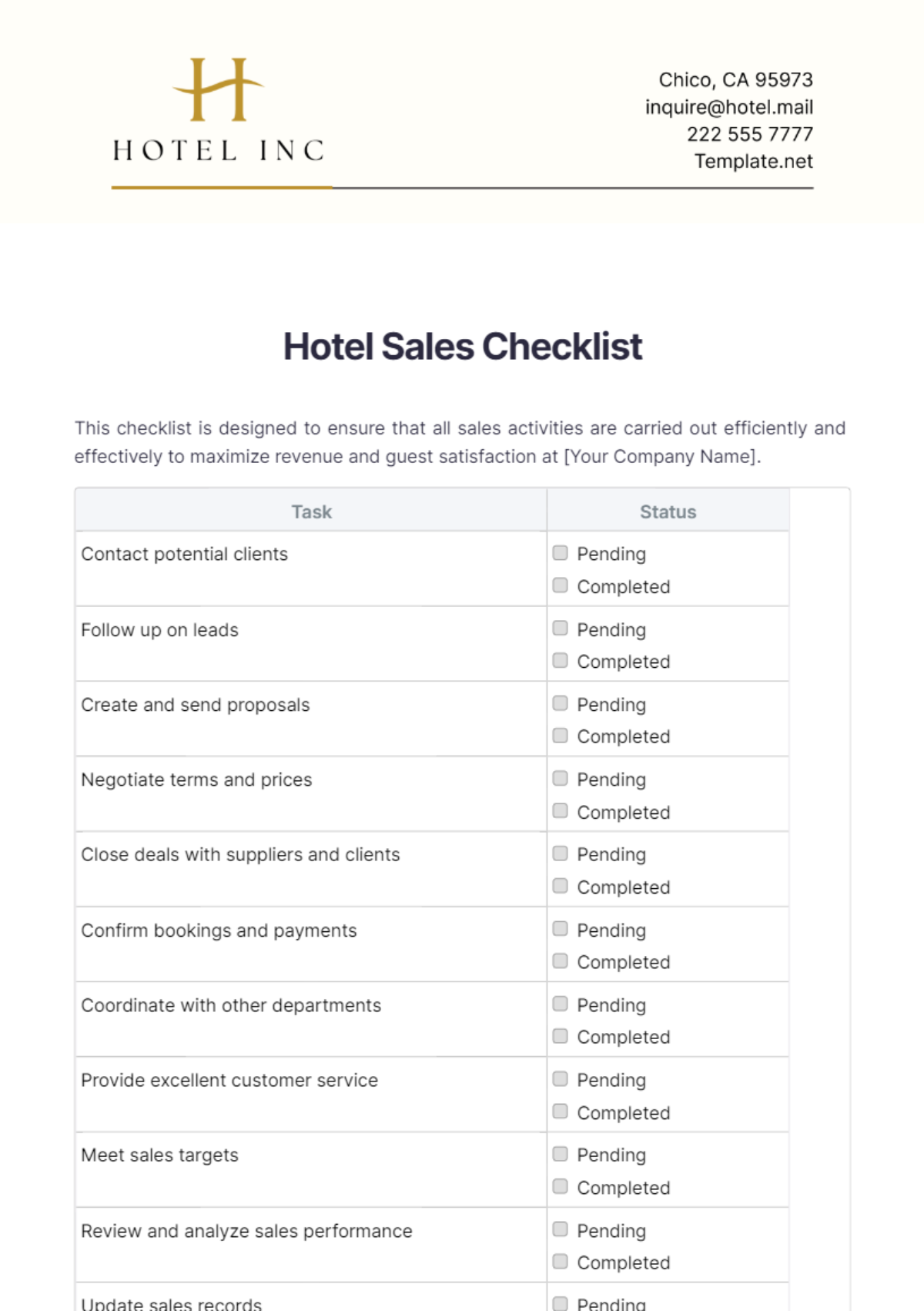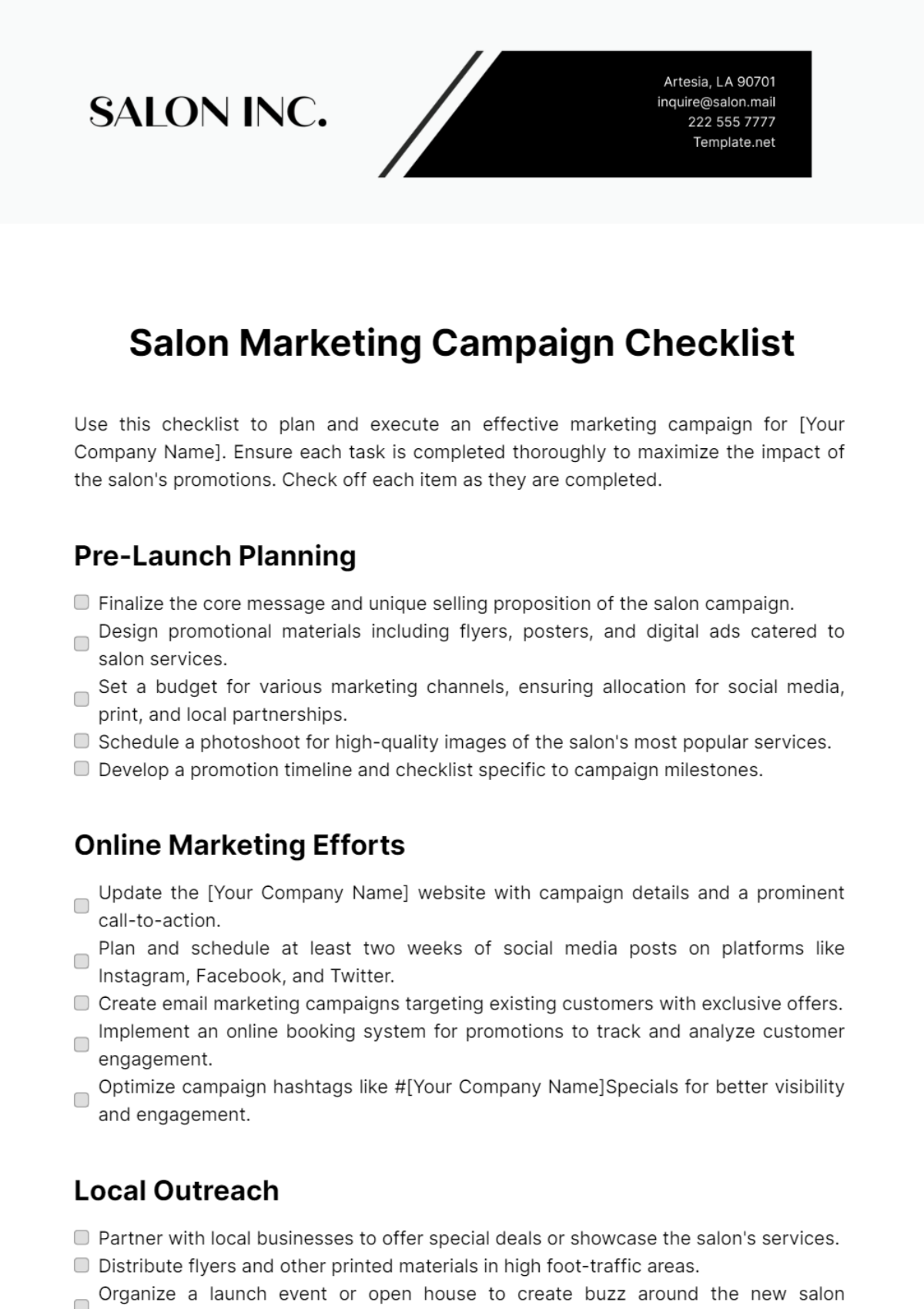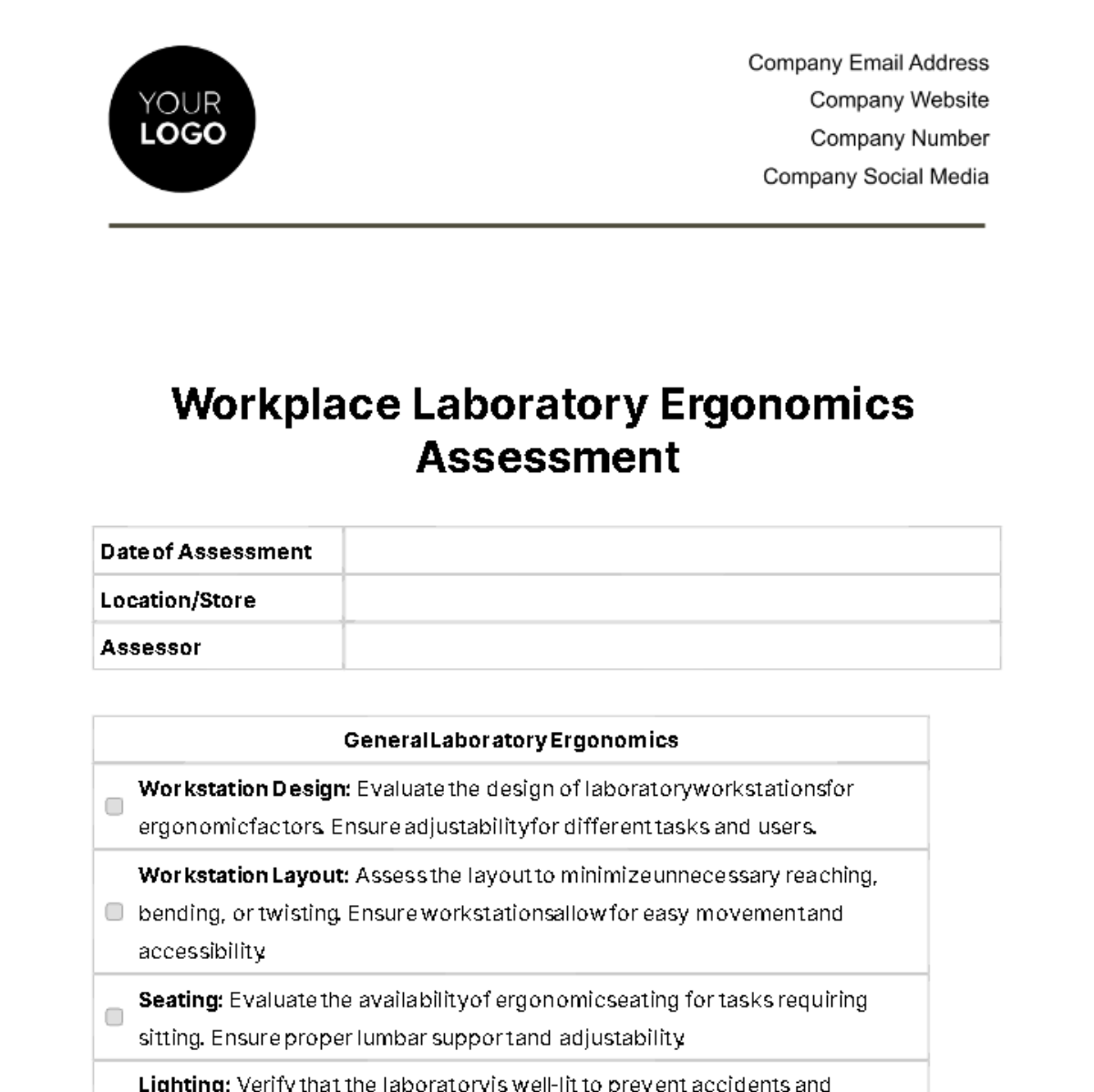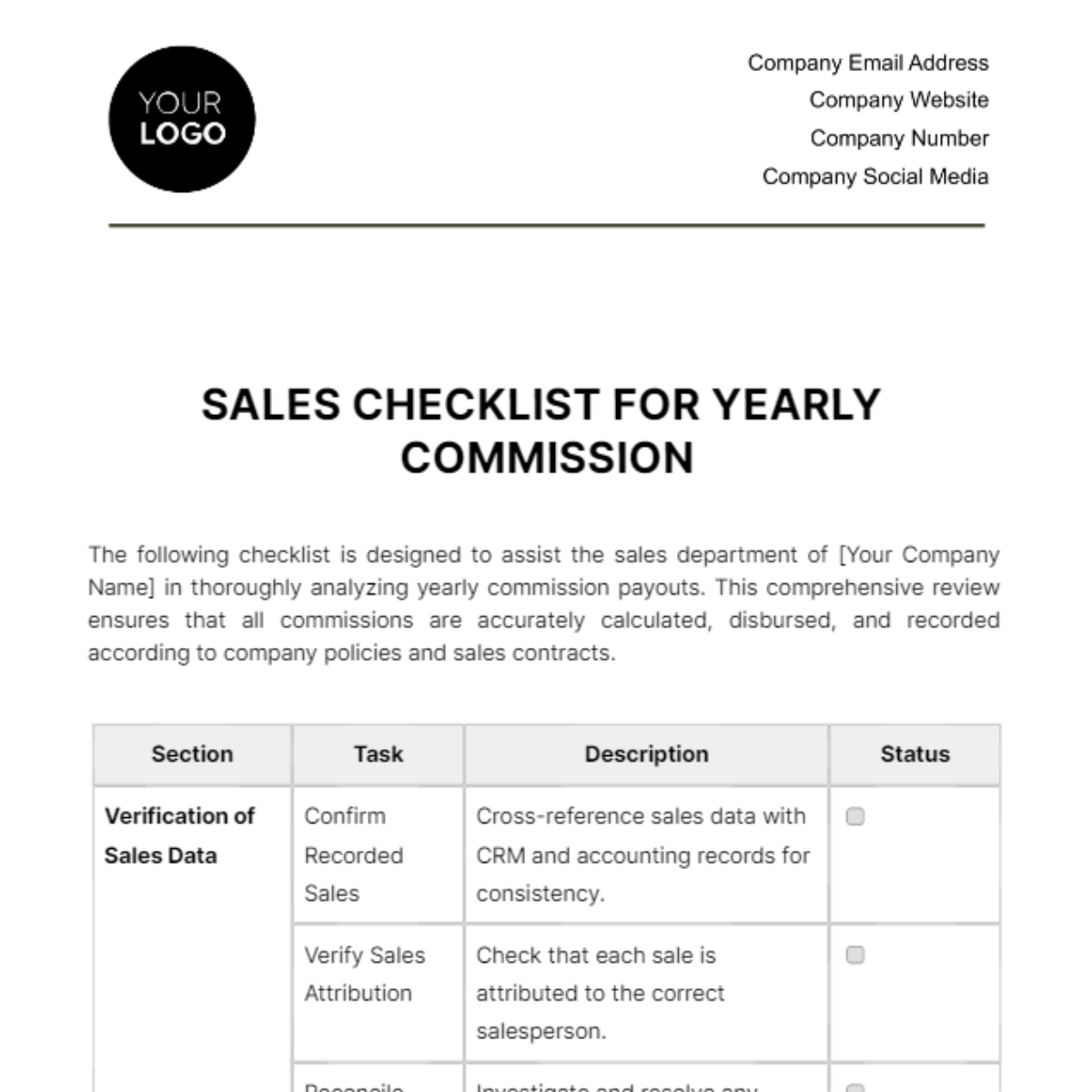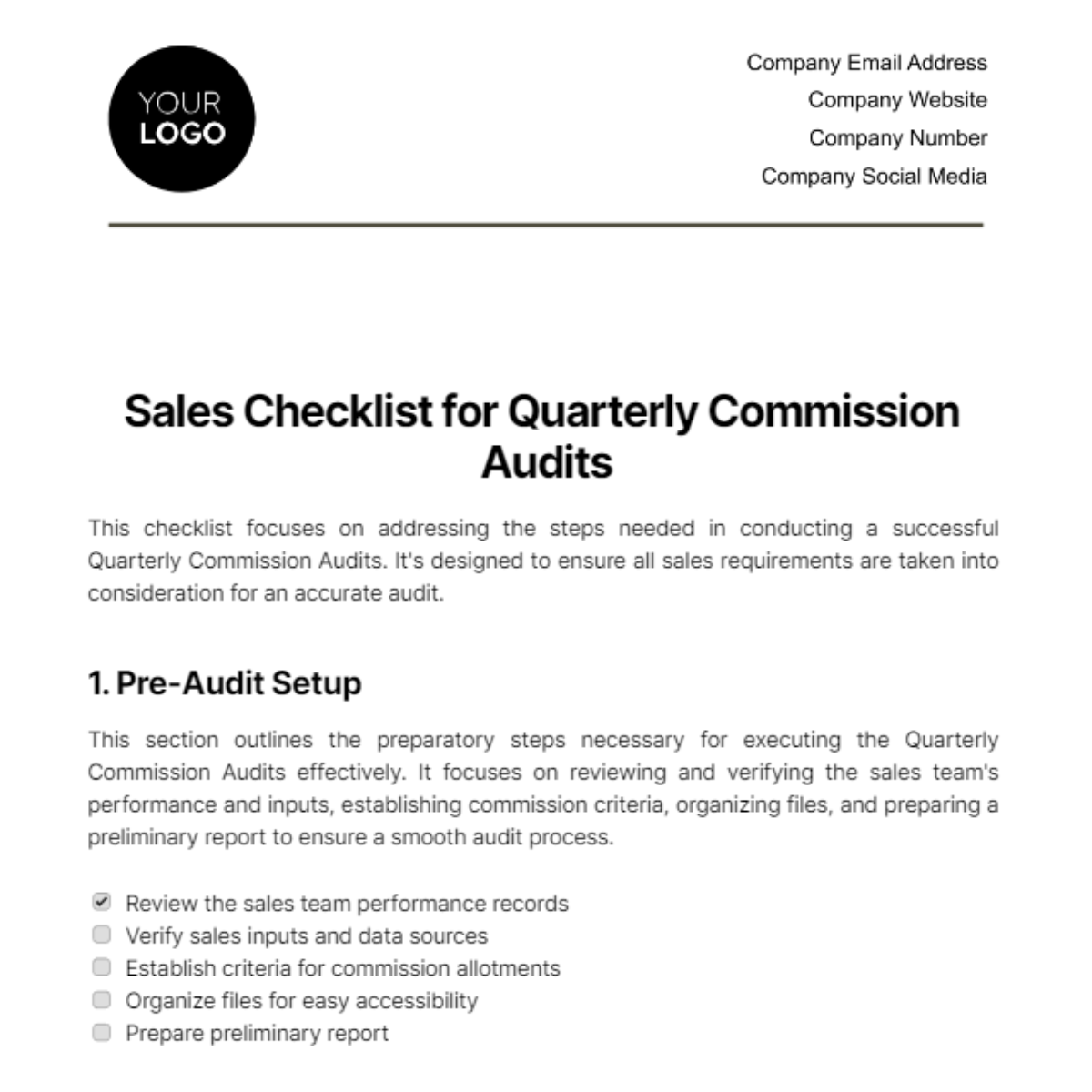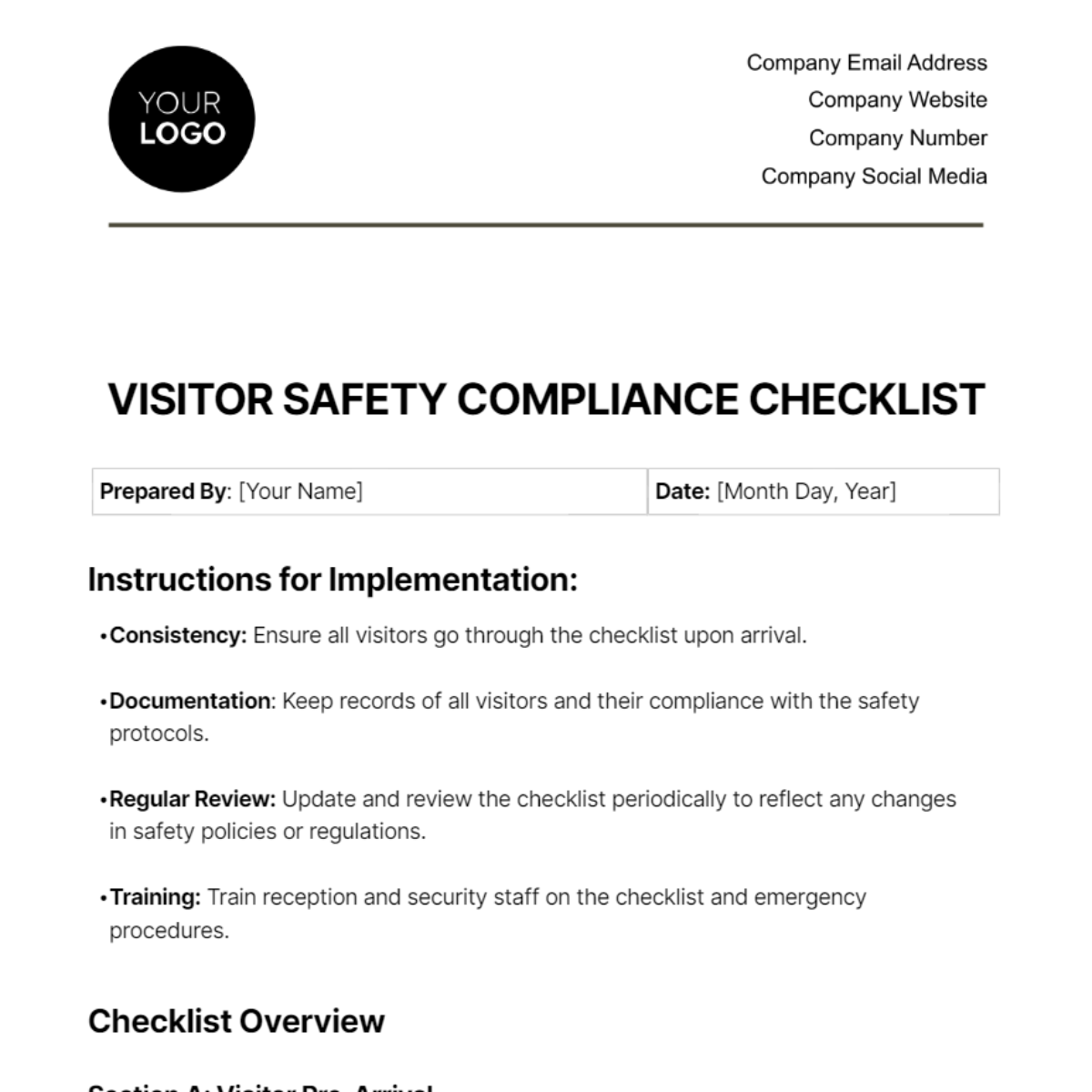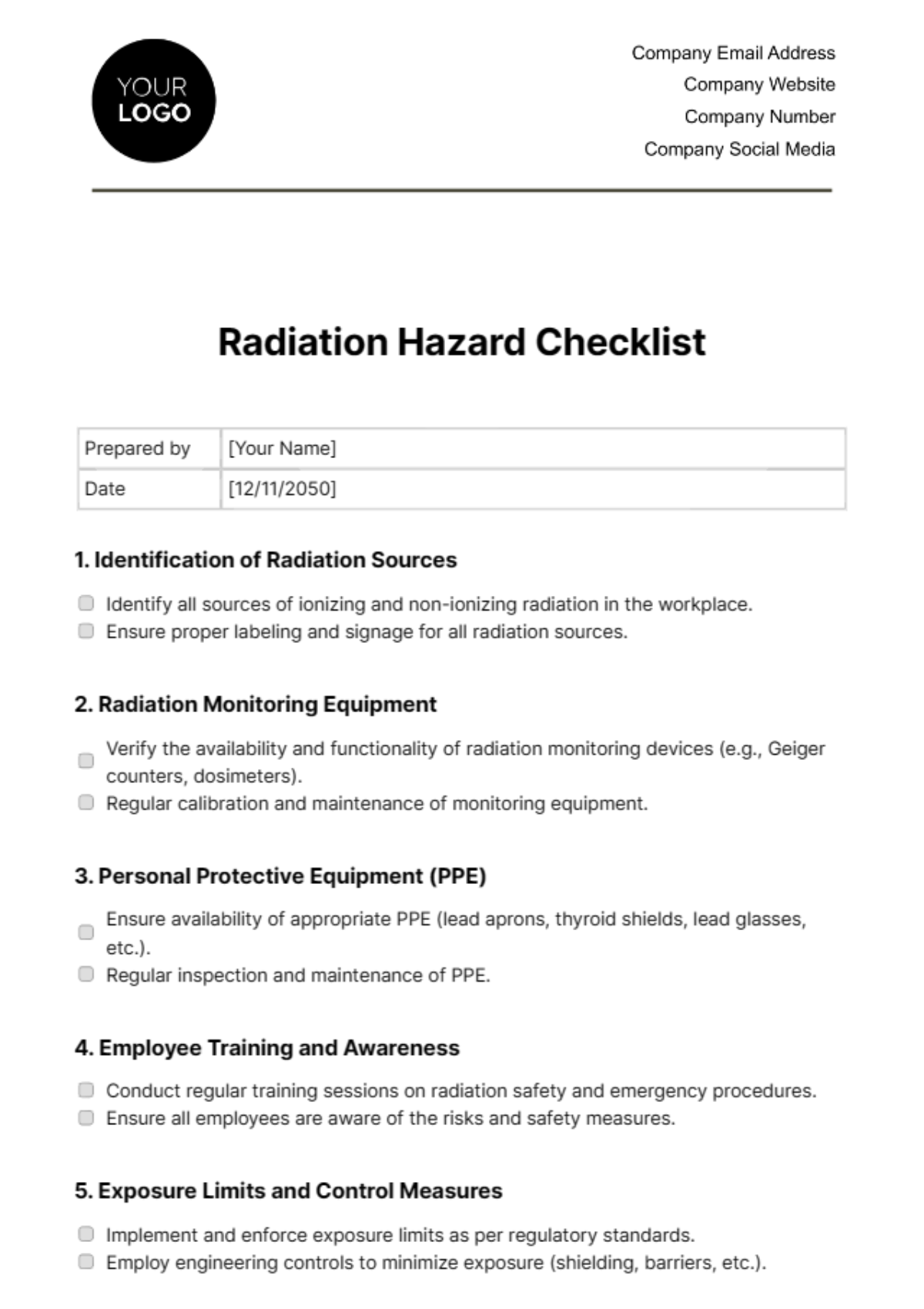Sales Training Checklist Printable
[Your Name]
[Your Company Name]
Pre-Training Preparation
Define Training Objectives:
Increase closing rates by 15% over the next quarter.
Enhance product knowledge to reduce customer objections by 25%.
Improve team confidence in using the CRM system.
Prepare Training Materials:
Create a PowerPoint presentation on "Effective Sales Strategies."
Develop a handout summarizing product features, benefits, and competitive advantages.
Prepare case studies of successful sales campaigns (e.g., “Case Study: How XYZ Corp Increased Sales by 30%”).
Create worksheets for role-playing scenarios.
Set Up Training Environment:
Arrange chairs in a circle for better interaction.
Test the projector and laptop to display the presentation.
Set up a whiteboard for group discussions and notes.
Prepare coffee, water, and snacks for breaks.
Confirm Participant Attendance:
Send calendar invites with a reminder one week before.
Collect RSVPs through a Google Form.
Training Content
Introduction to Sales
Overview of the sales process: prospecting, qualifying, presenting, closing, and follow-up.
Discuss the importance of sales in achieving a $2 million annual revenue target.
Introduce company mission and values: “Customer-Centric Approach.”
Product Knowledge
Detailed breakdown of our top three products:
Product A: Features, benefits, and target demographics.
Product B: Unique selling propositions and customer testimonials.
Product C: Price comparisons and ROI for clients.
Sales Techniques
Prospecting Strategies:
Identify target markets: Small to mid-sized businesses in technology and retail sectors.
Discuss methods for lead generation, including LinkedIn outreach and networking events (e.g., local Chamber of Commerce meetings).
Building Rapport:
Role-play scenarios to practice effective communication and relationship-building techniques (e.g., “How to Introduce Yourself to a Prospect”).
Active listening exercises: Pair up and practice summarizing what the other person says.
Sales Presentation Skills:
Structure of a compelling sales pitch: Opening, problem identification, solution presentation, and call to action.
Practice engaging storytelling techniques: Use a case study to illustrate a successful client story.
Closing Techniques:
Review various closing strategies:
Assumptive Close: “When would you like to get started?”
Urgency Close: “This promotion ends Friday; can we secure your order today?”
Customer Relationship Management (CRM)
Overview of SalesForce: Importance of CRM in tracking leads and sales.
Best practices for inputting and tracking customer data: Record all customer interactions, set reminders for follow-ups.
Post-Training Activities
Schedule Follow-Up Sessions:
Plan monthly check-in meetings to assess progress.
Assign mentors within the team for ongoing support.
Distribute Training Feedback Forms:
Use Google Forms to collect feedback on the training session.
Analyze feedback to assess effectiveness: Aim for at least 80% satisfaction rate.
Evaluate Training Effectiveness:
Monitor closing rates and customer feedback over the next three months.
Set individual and team goals based on feedback and performance metrics.
Create Action Plans:
Encourage participants to outline three actionable steps to apply learned skills.
Schedule one-on-one sessions with each team member to discuss personal goals.
